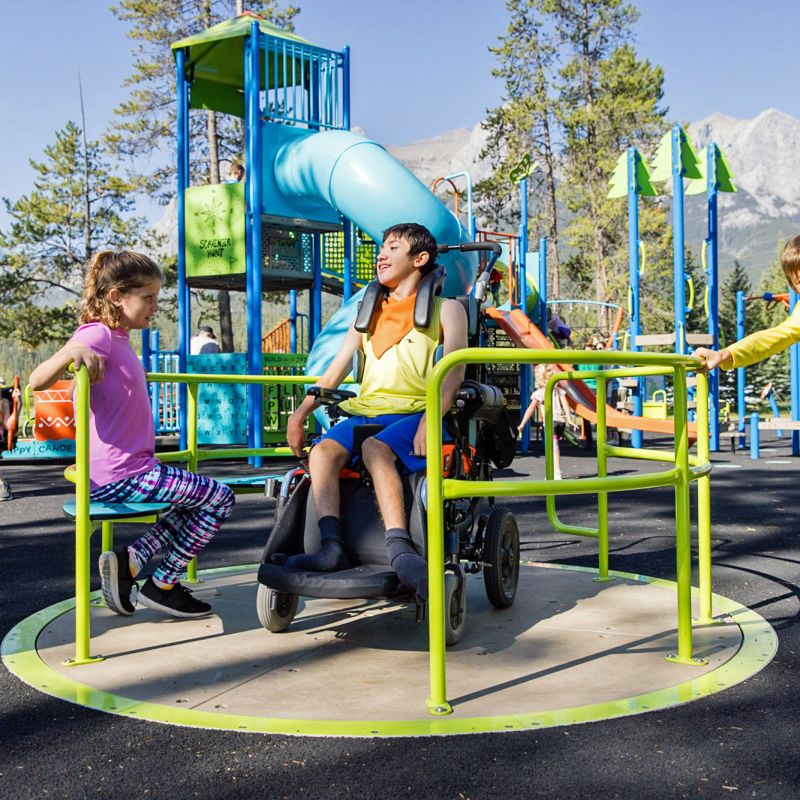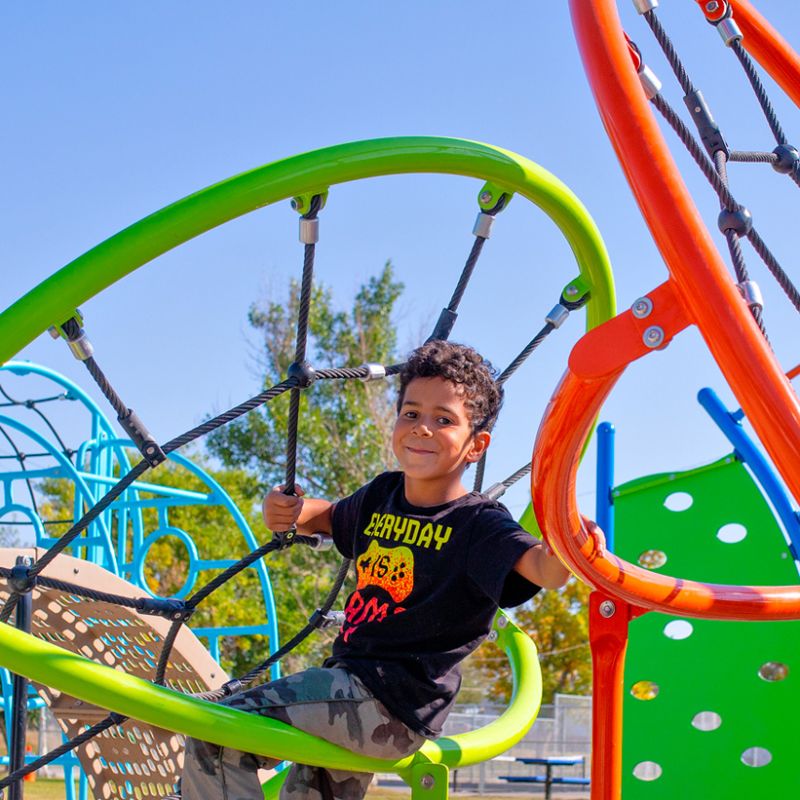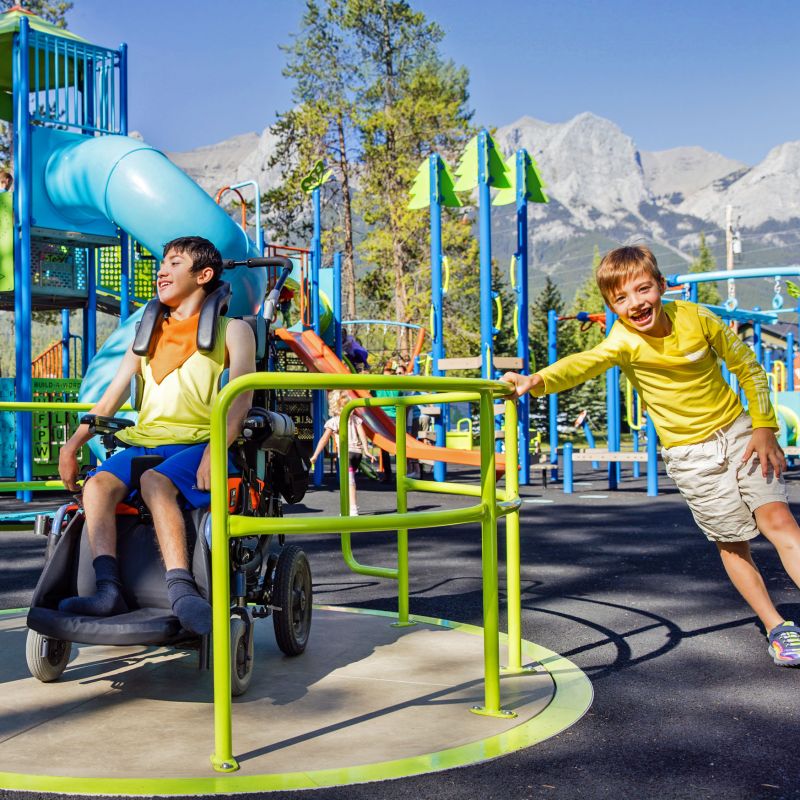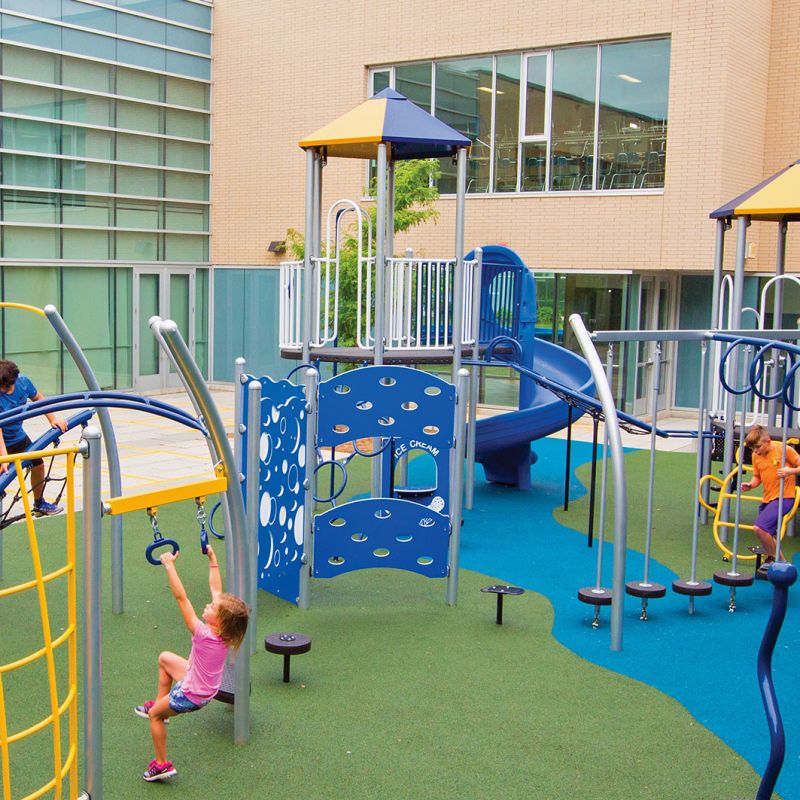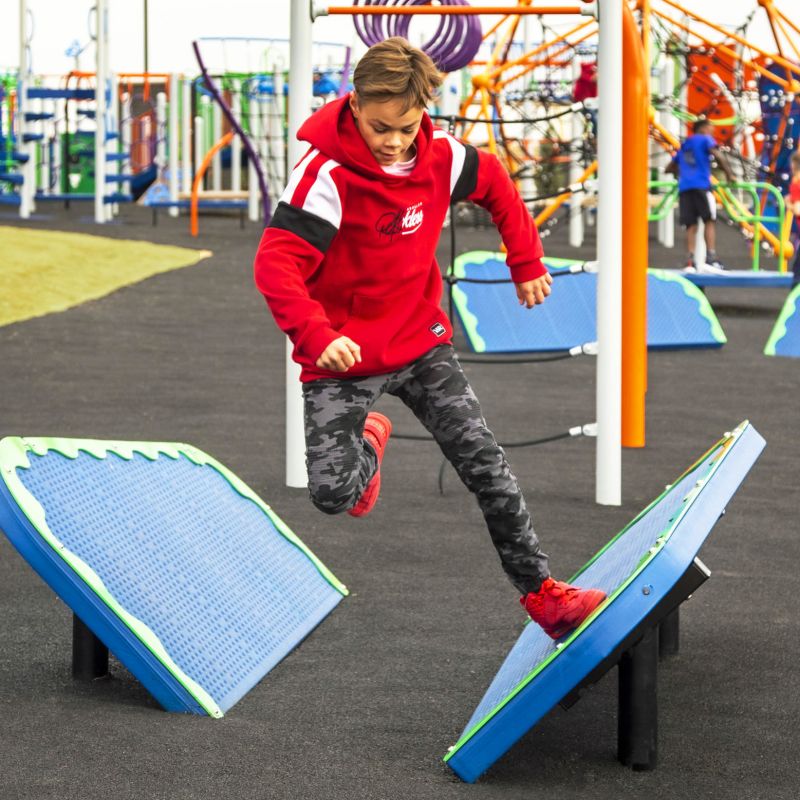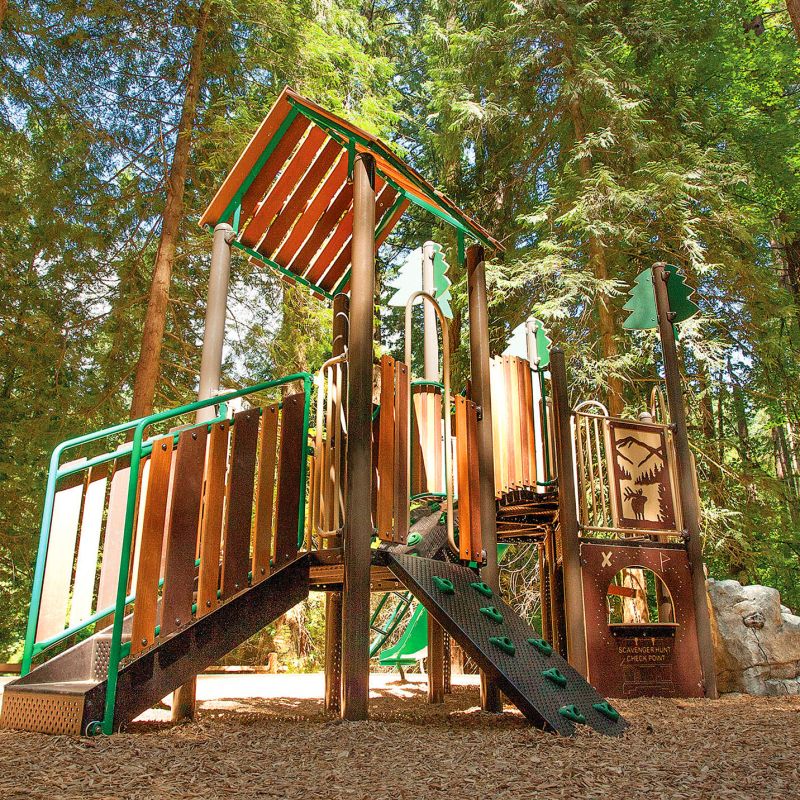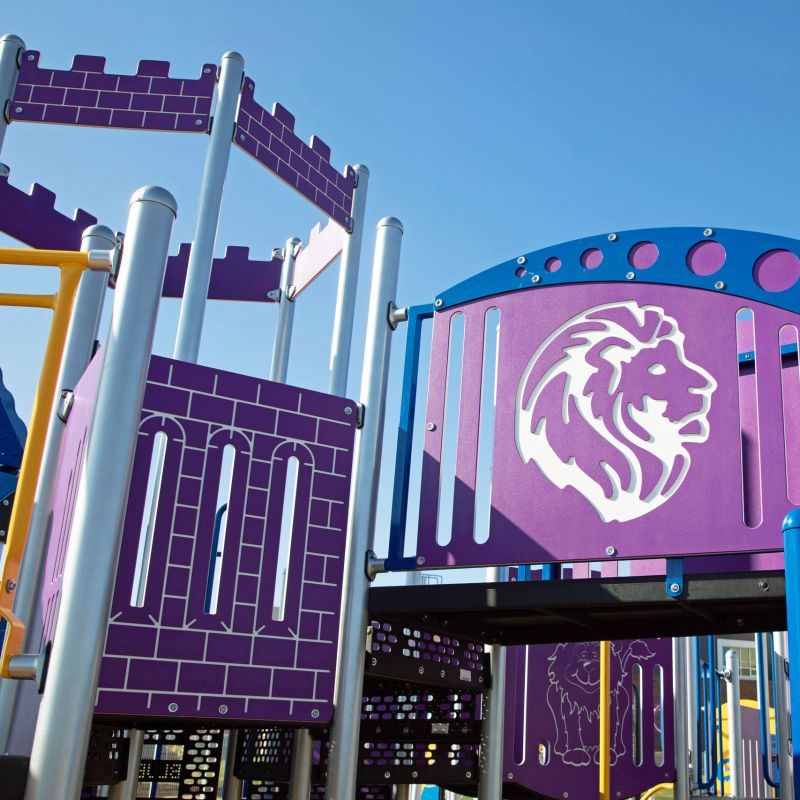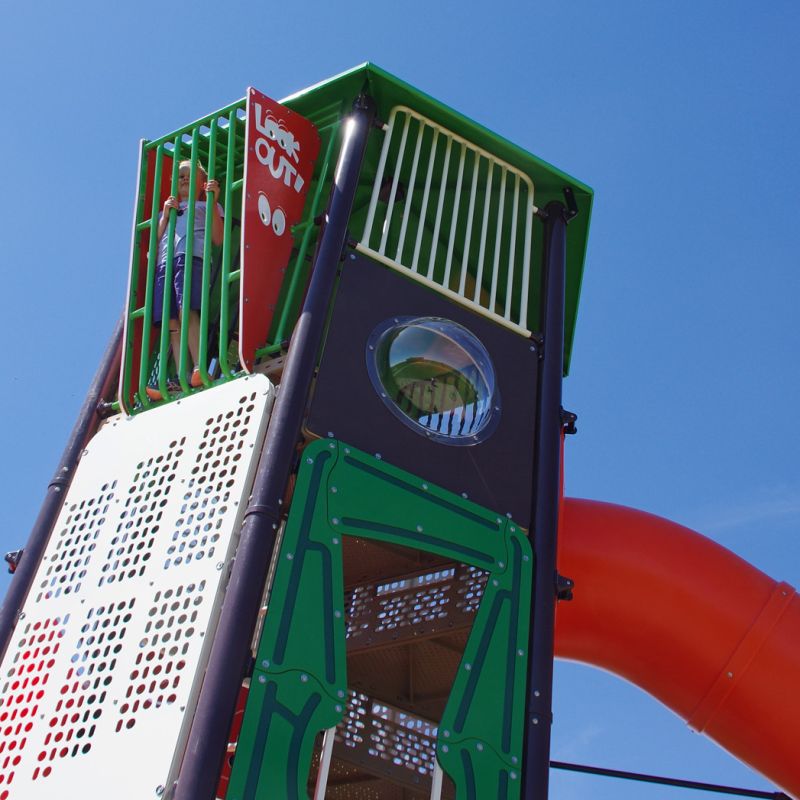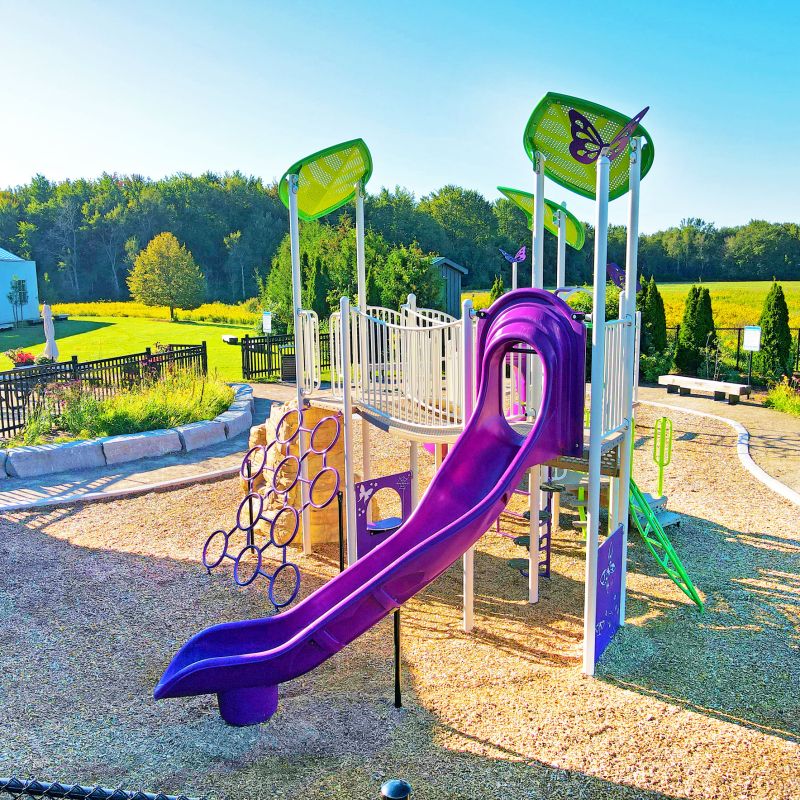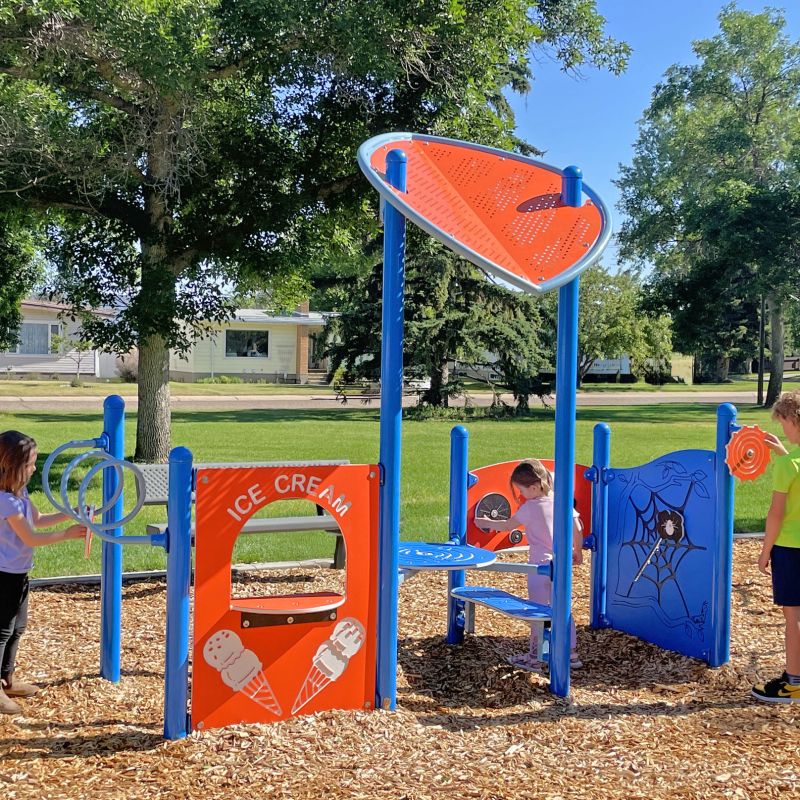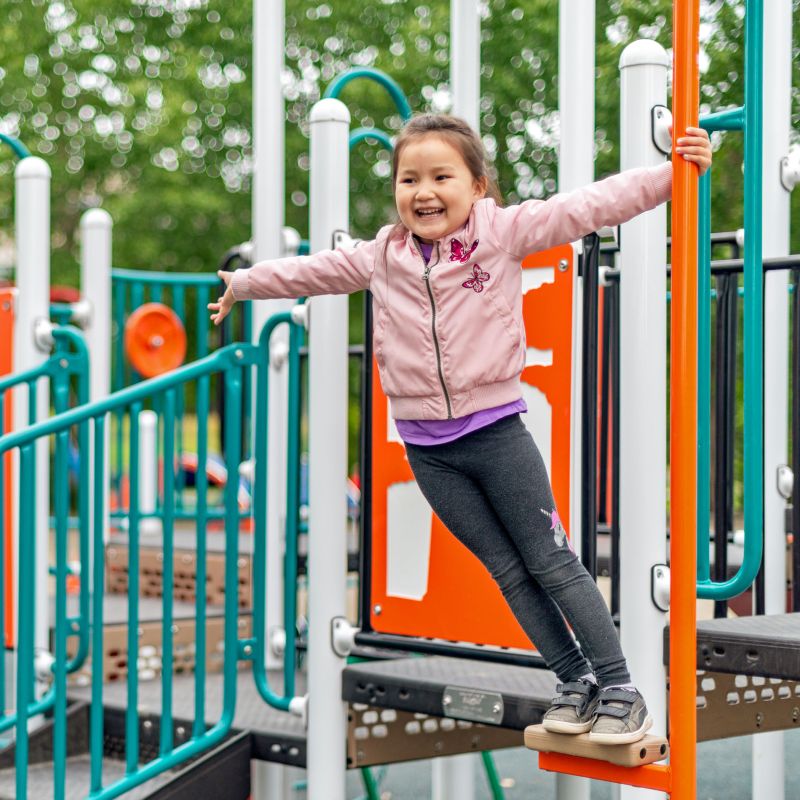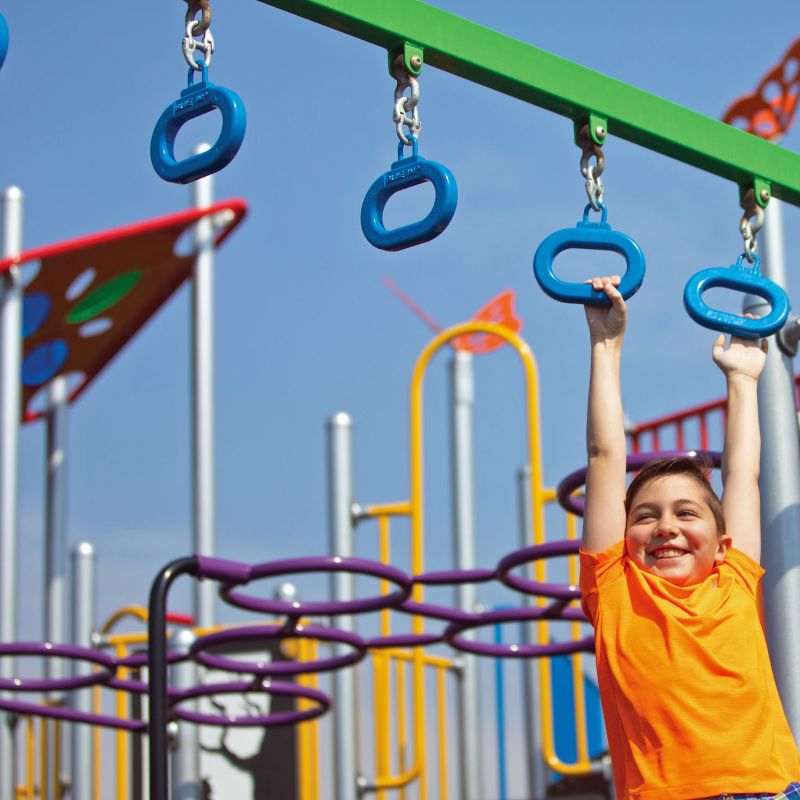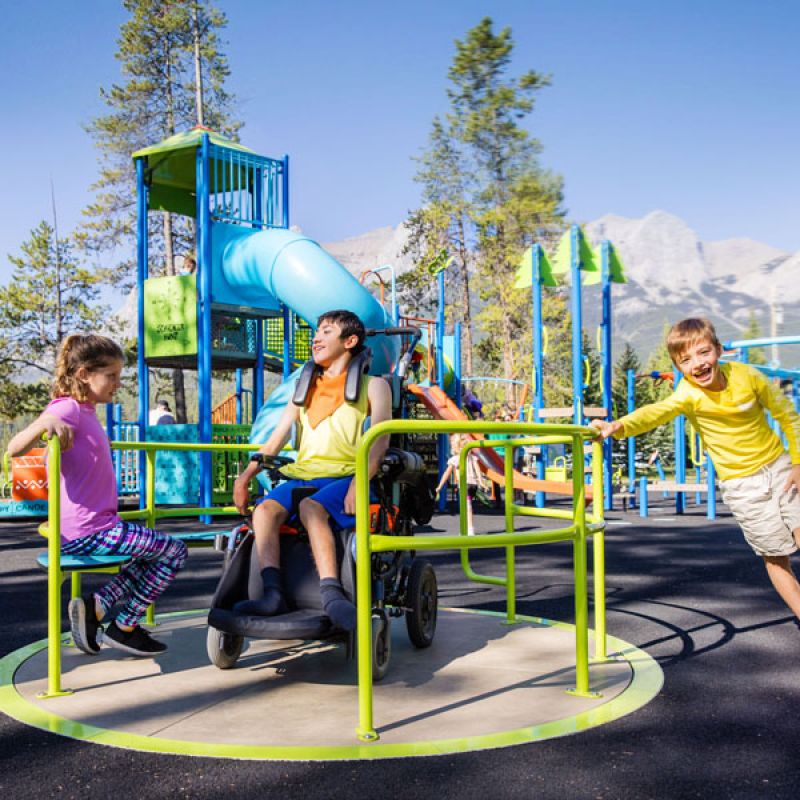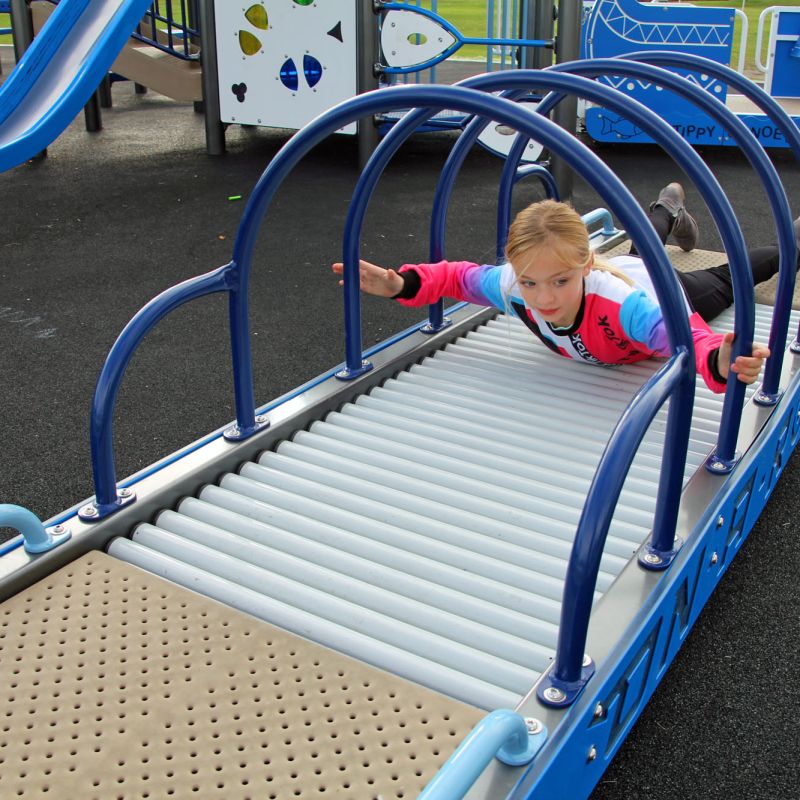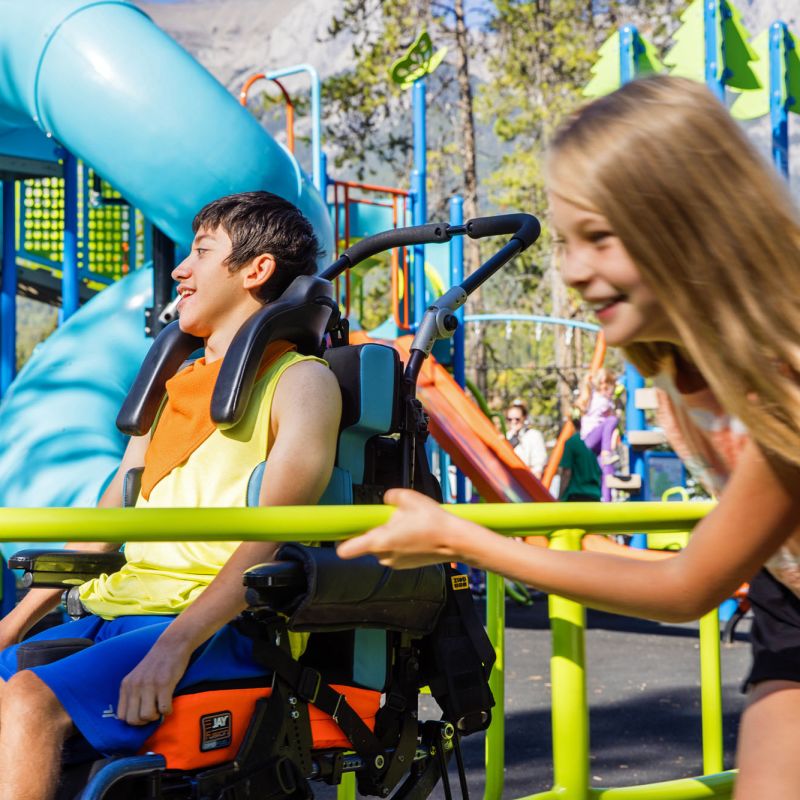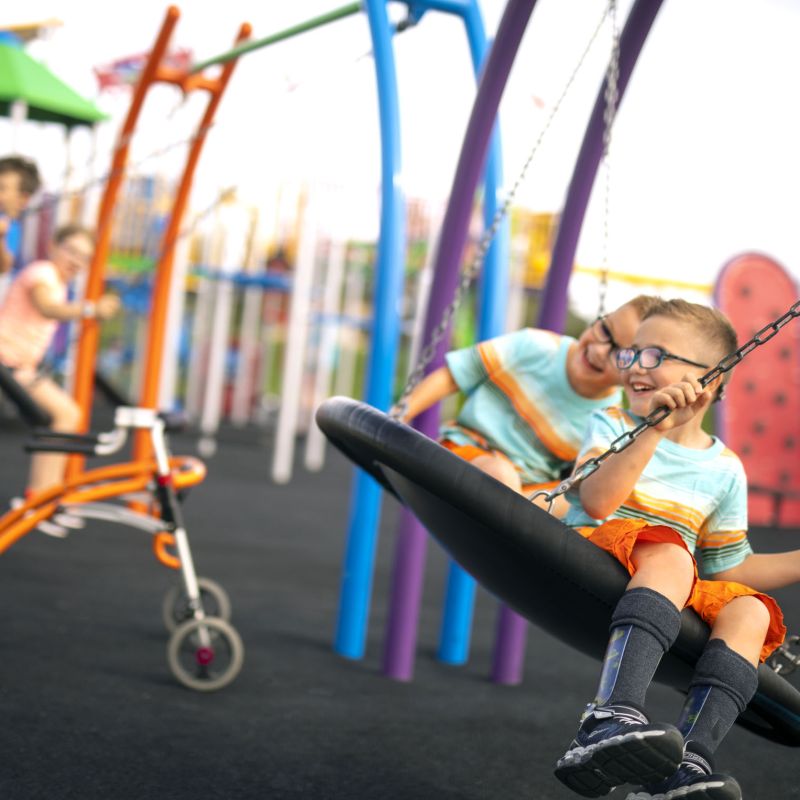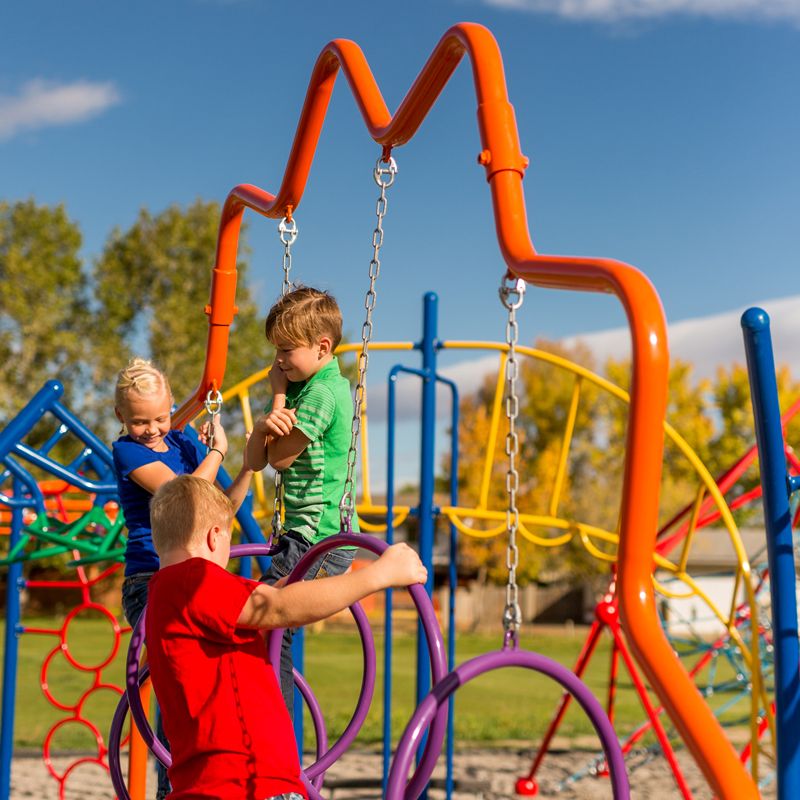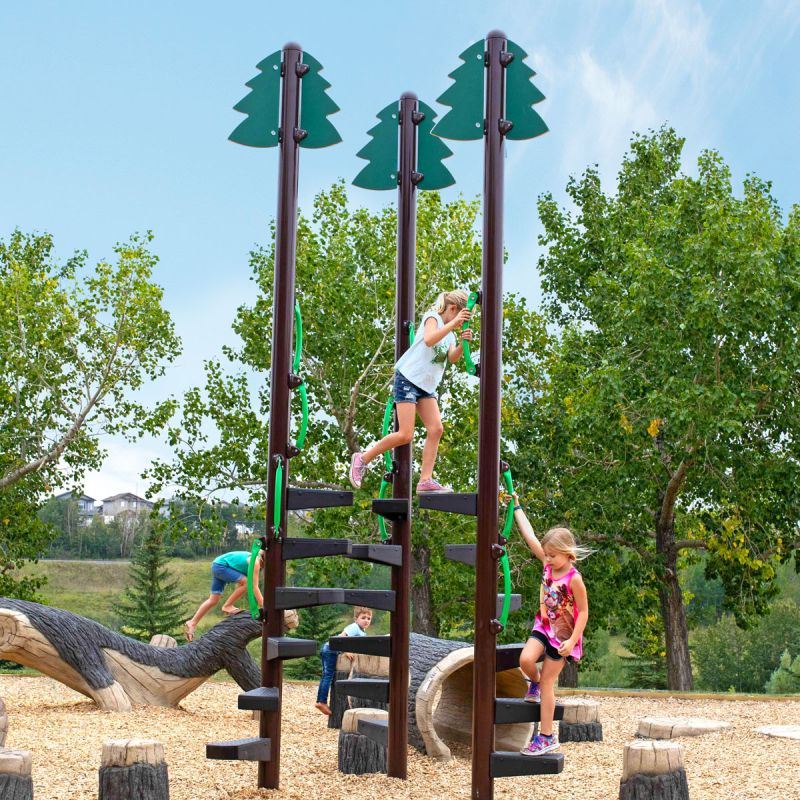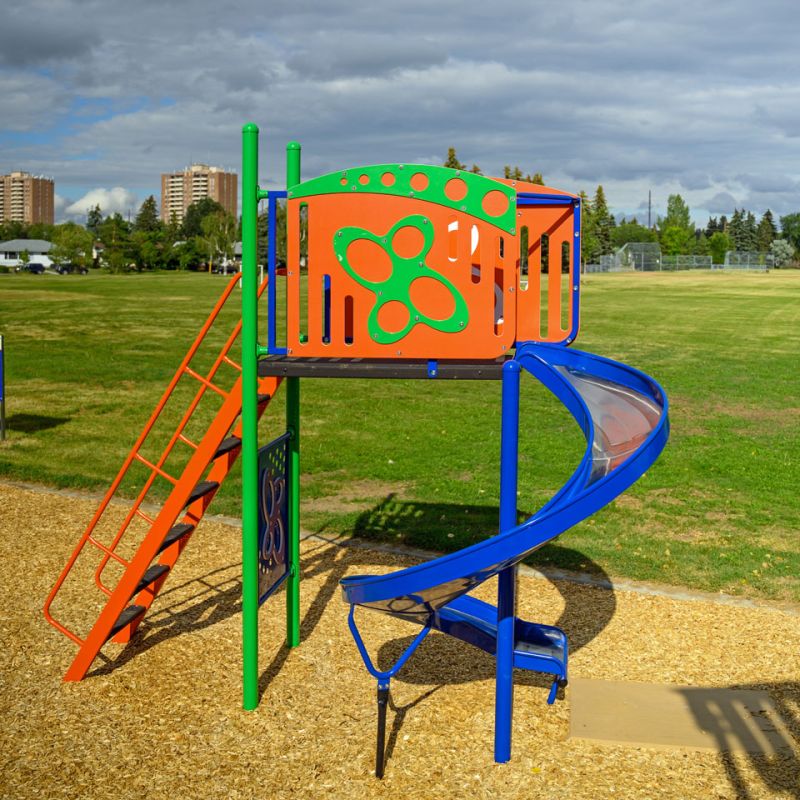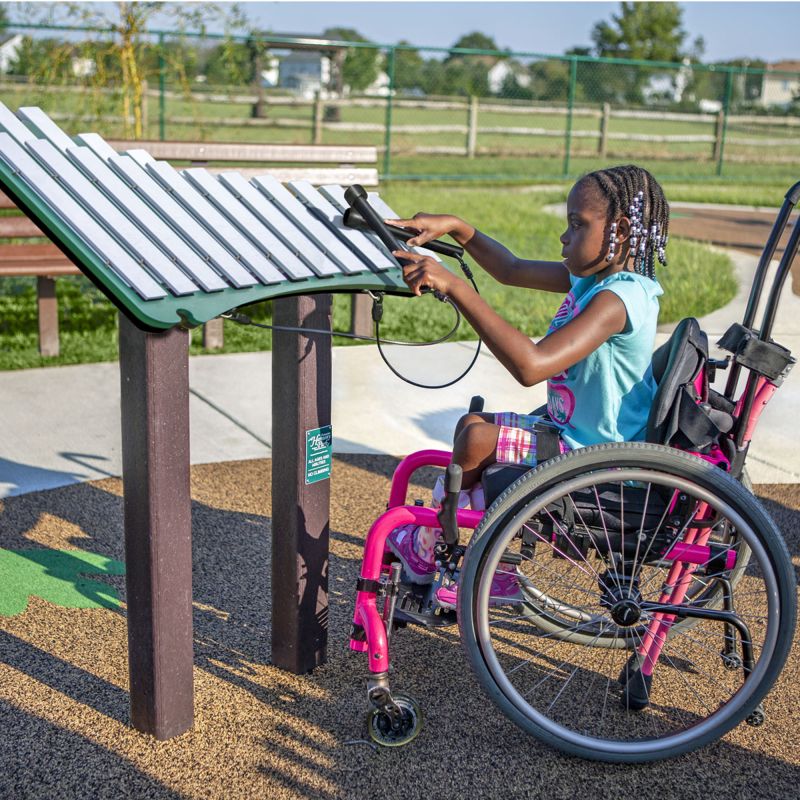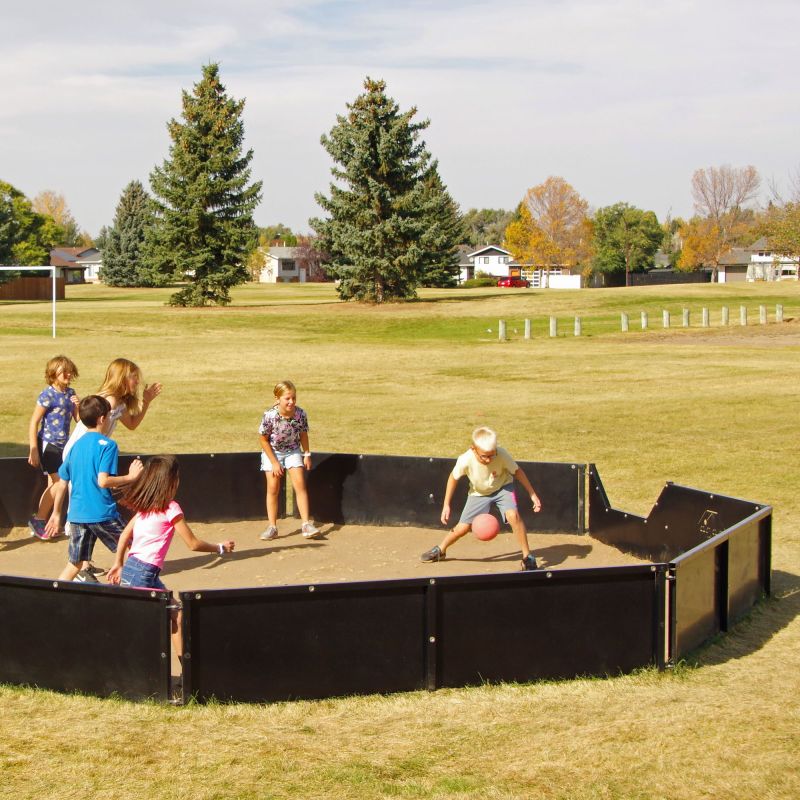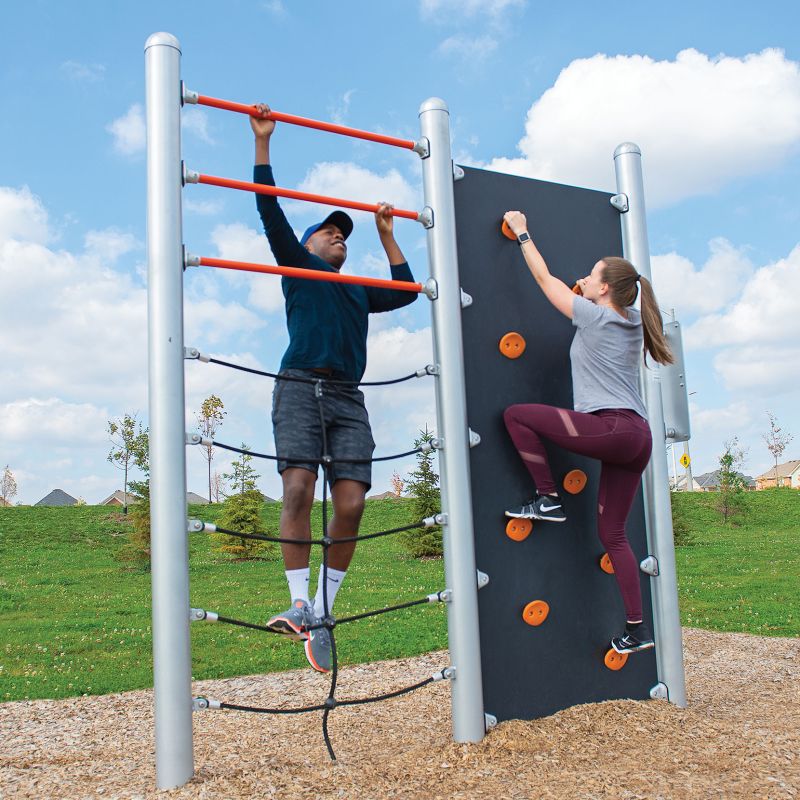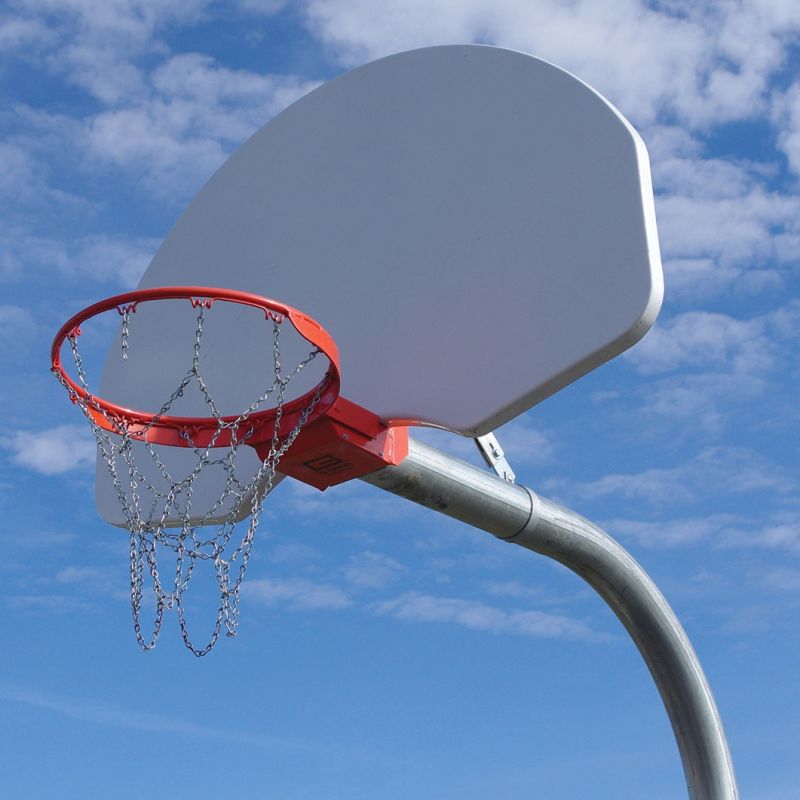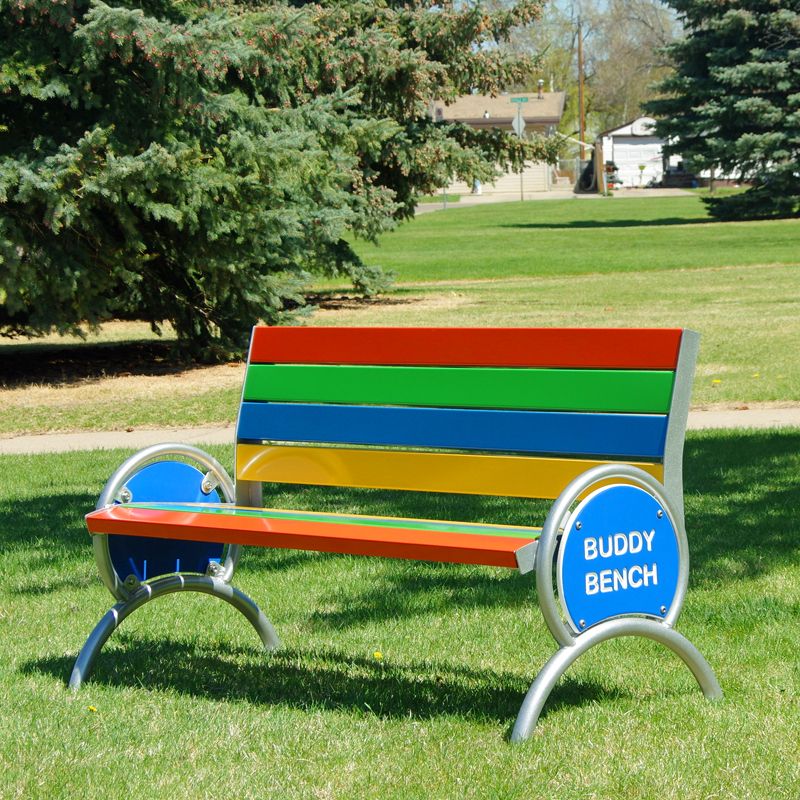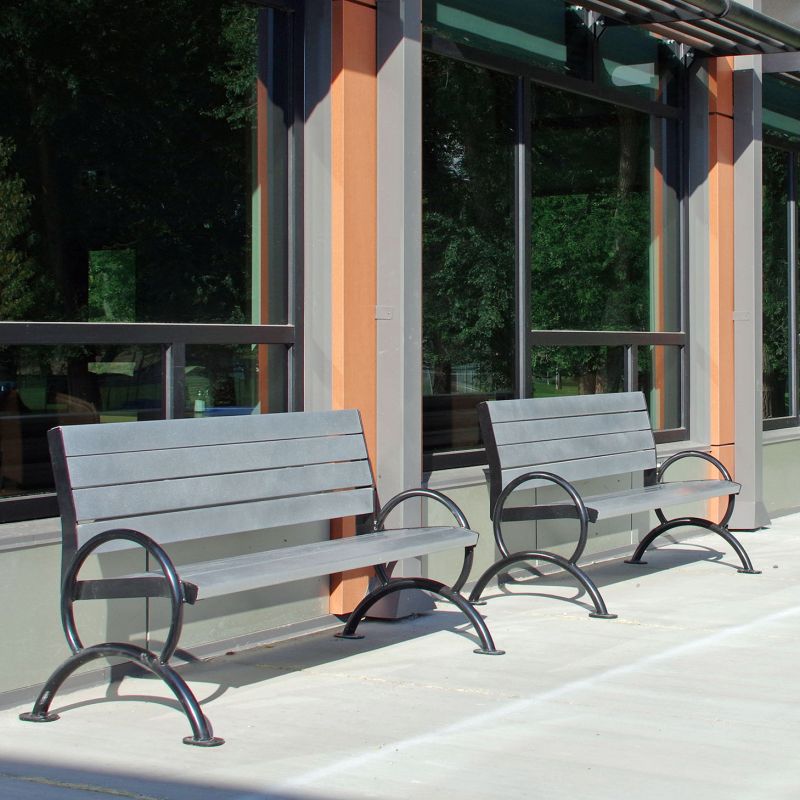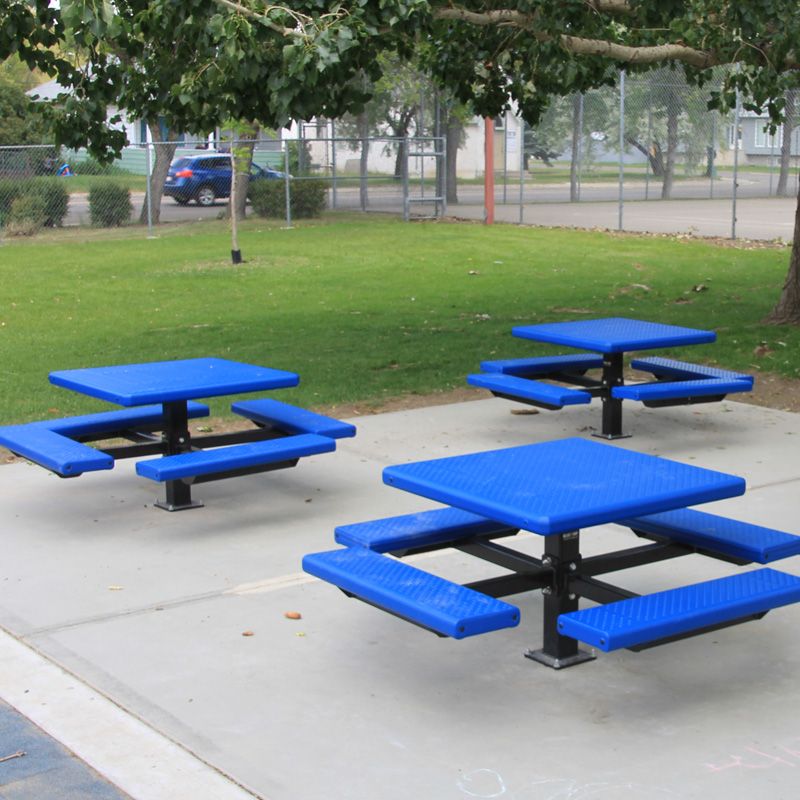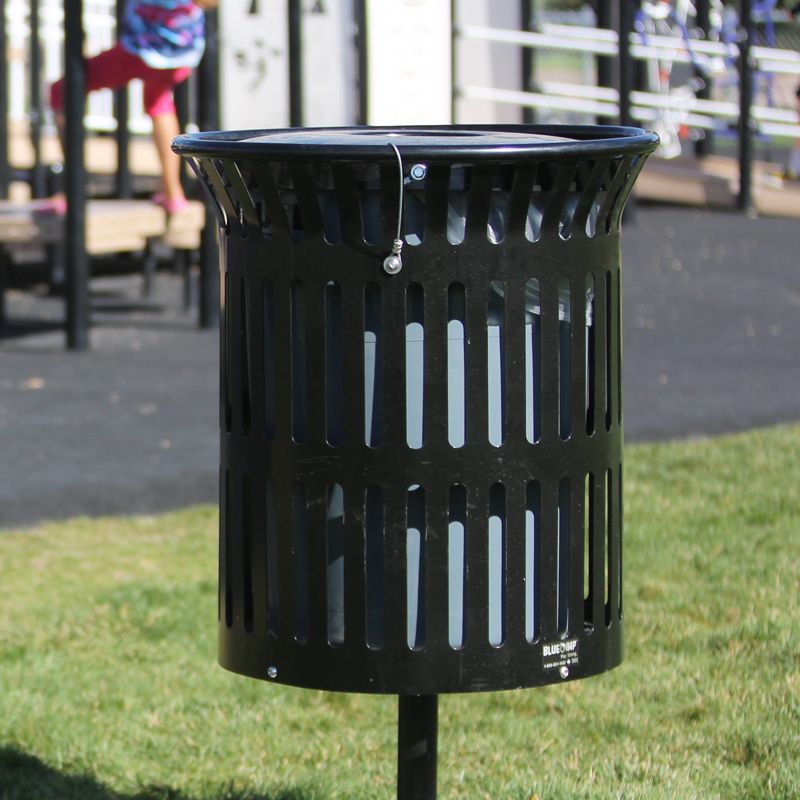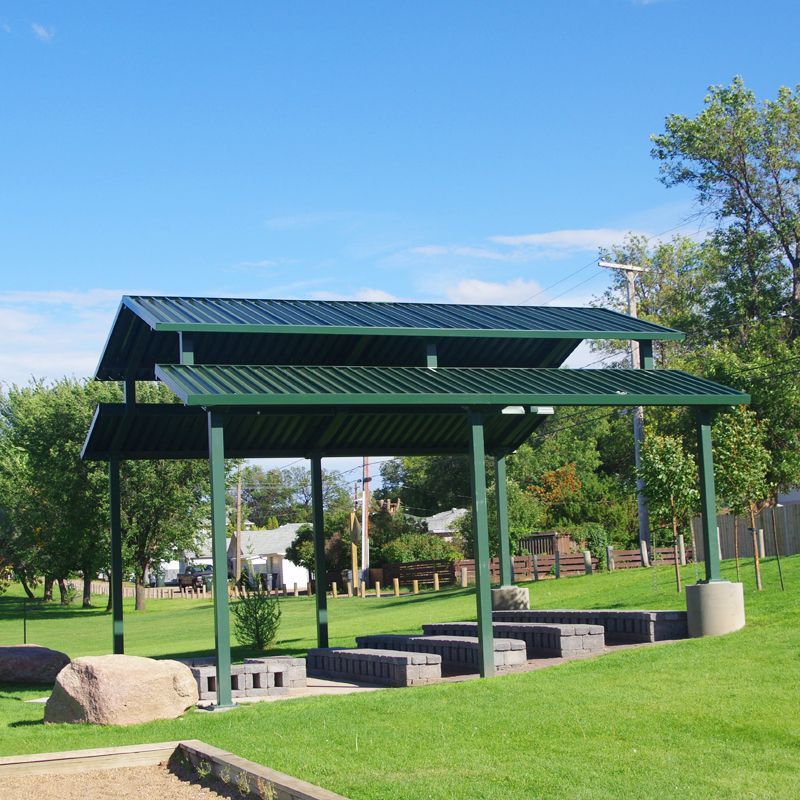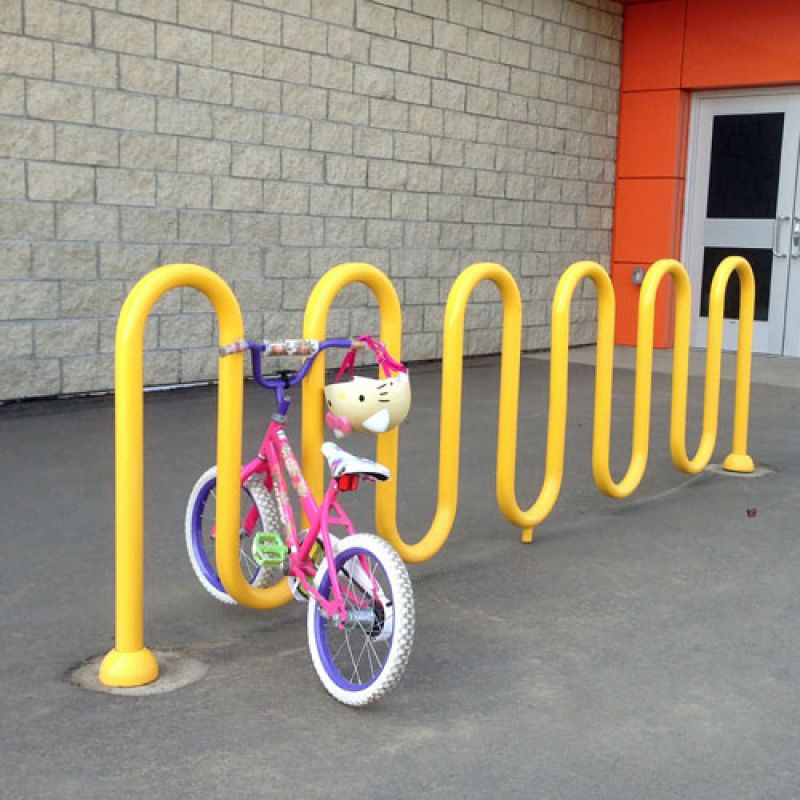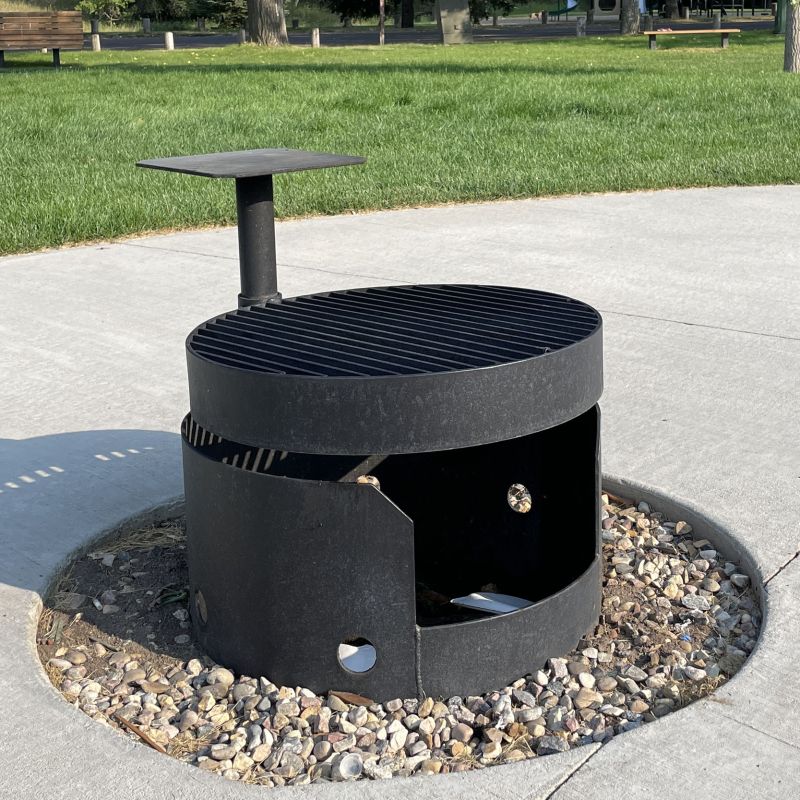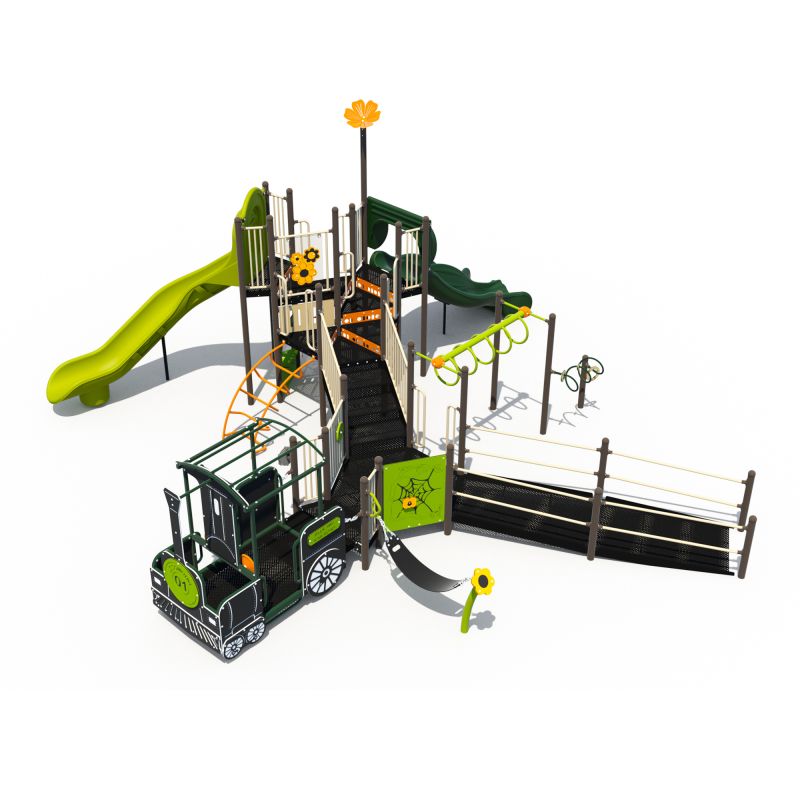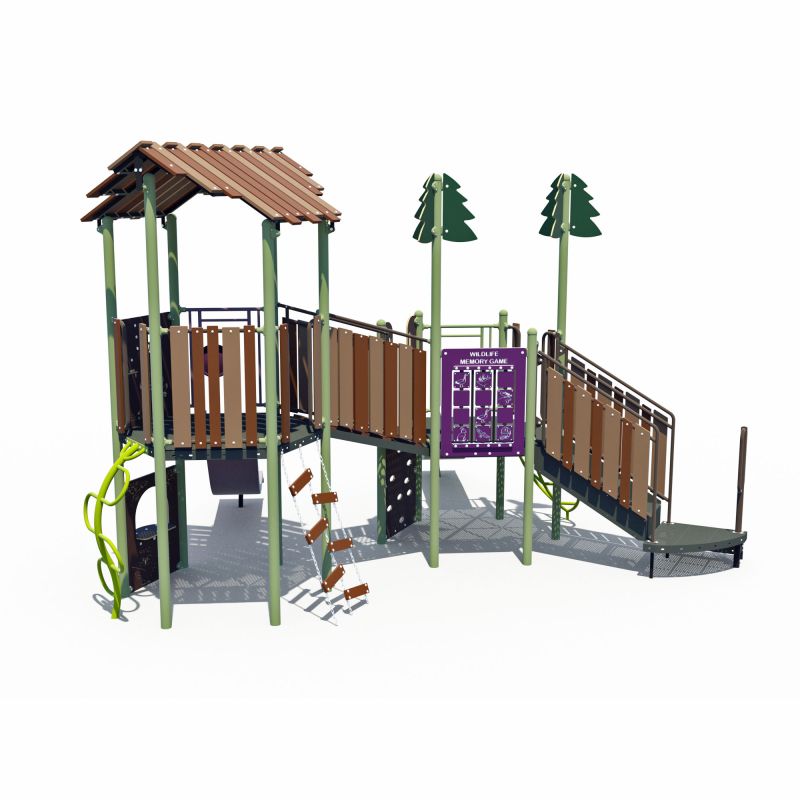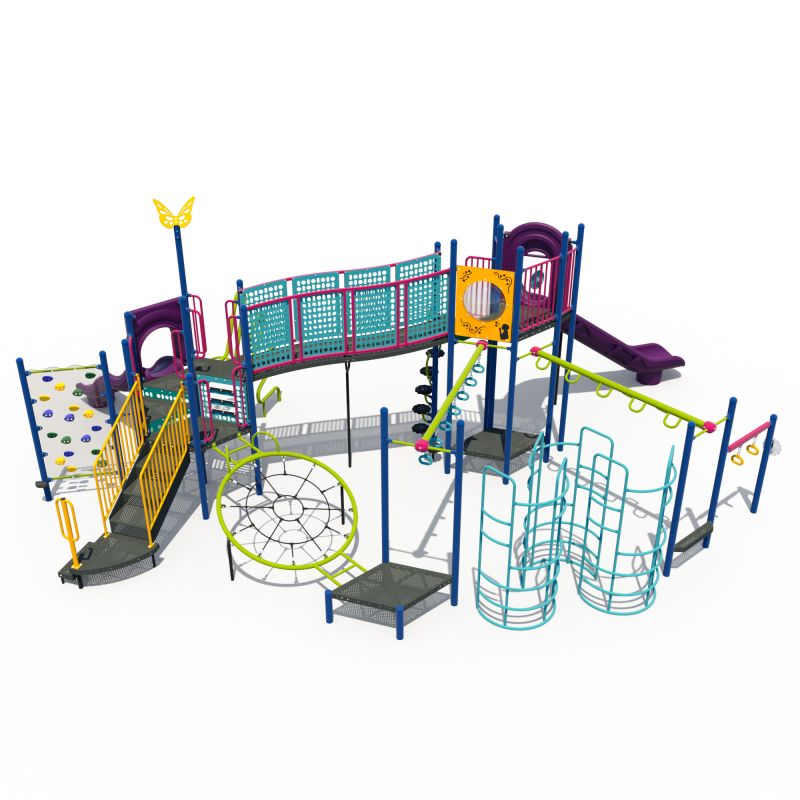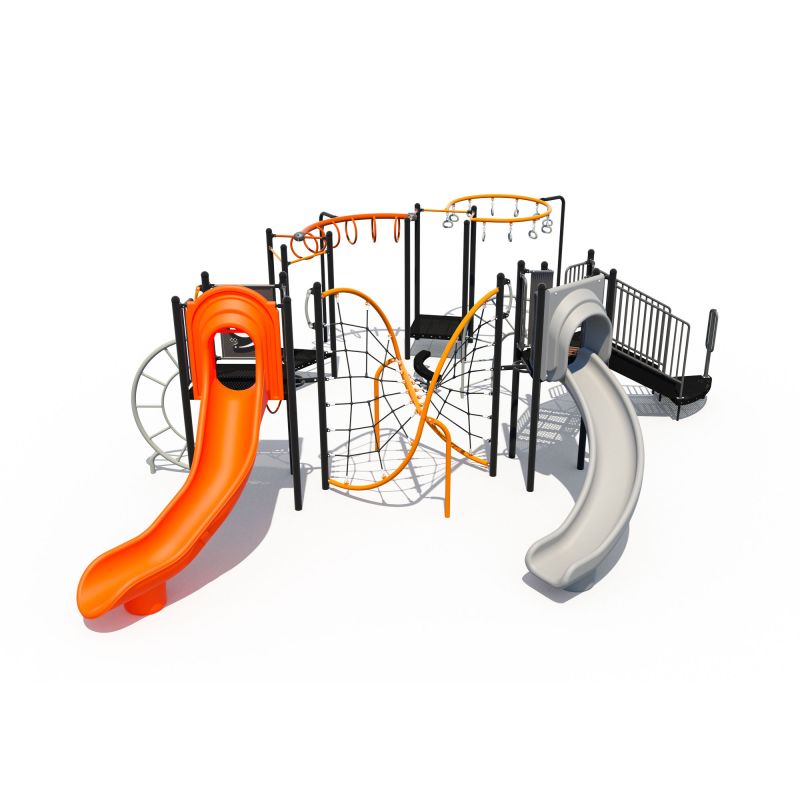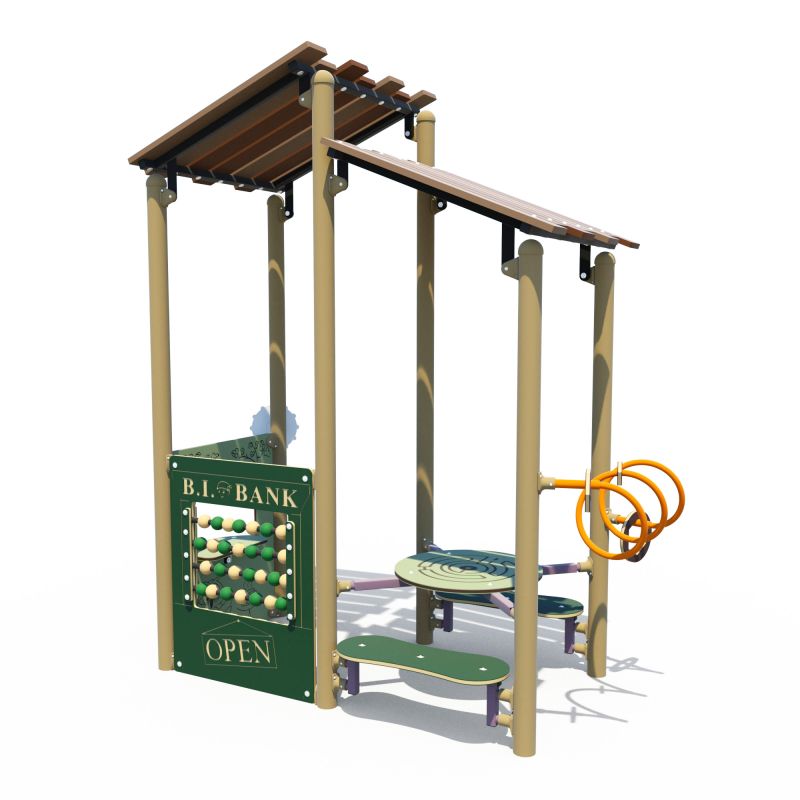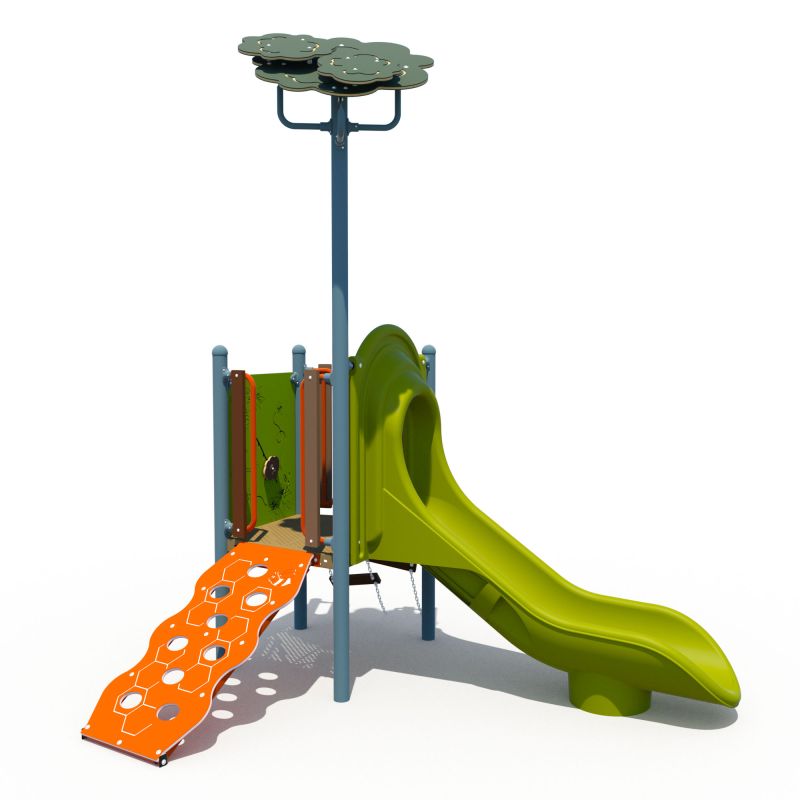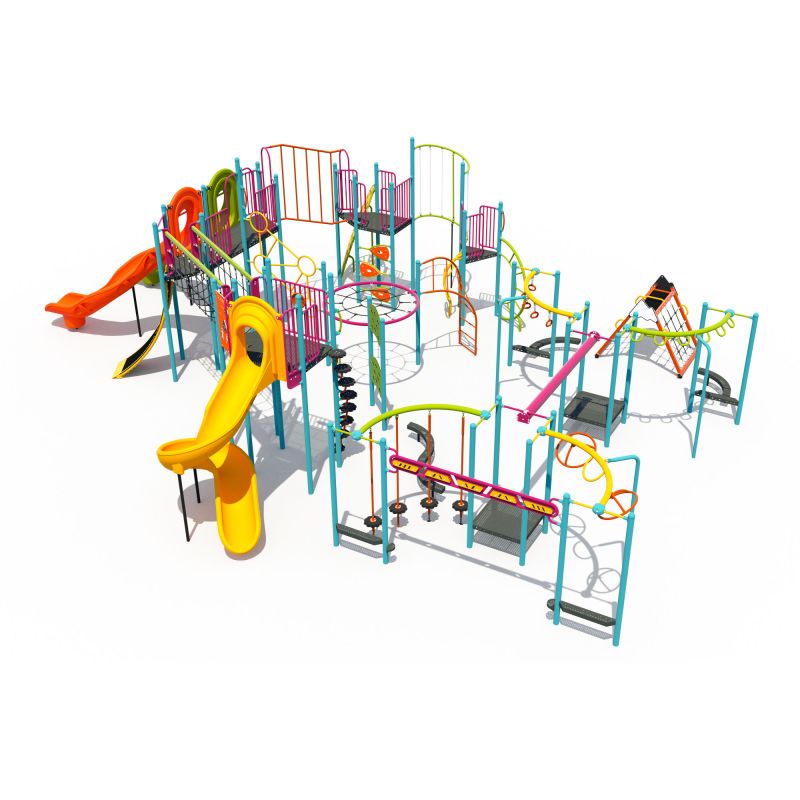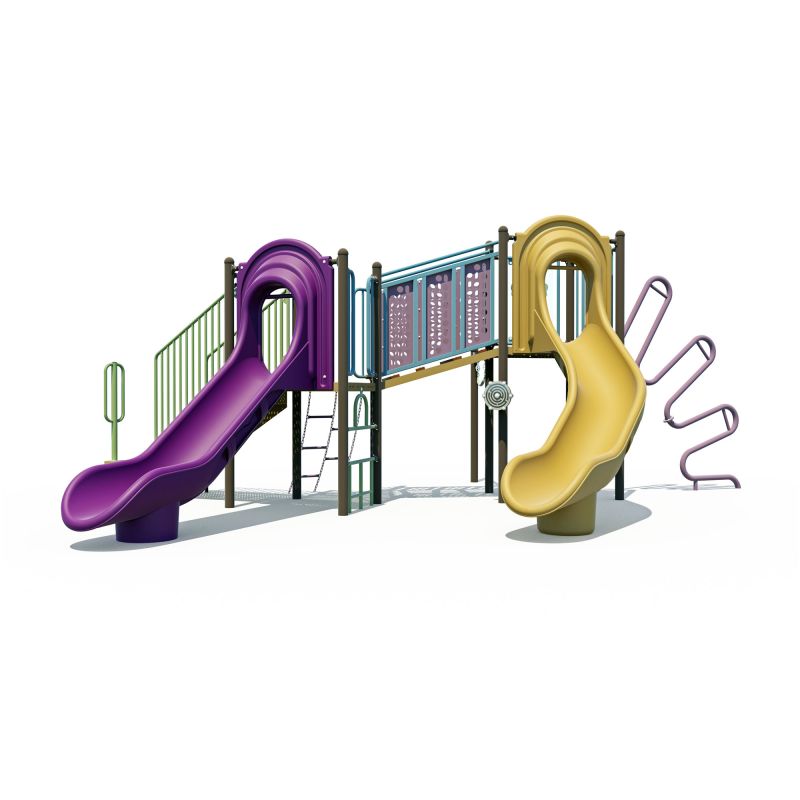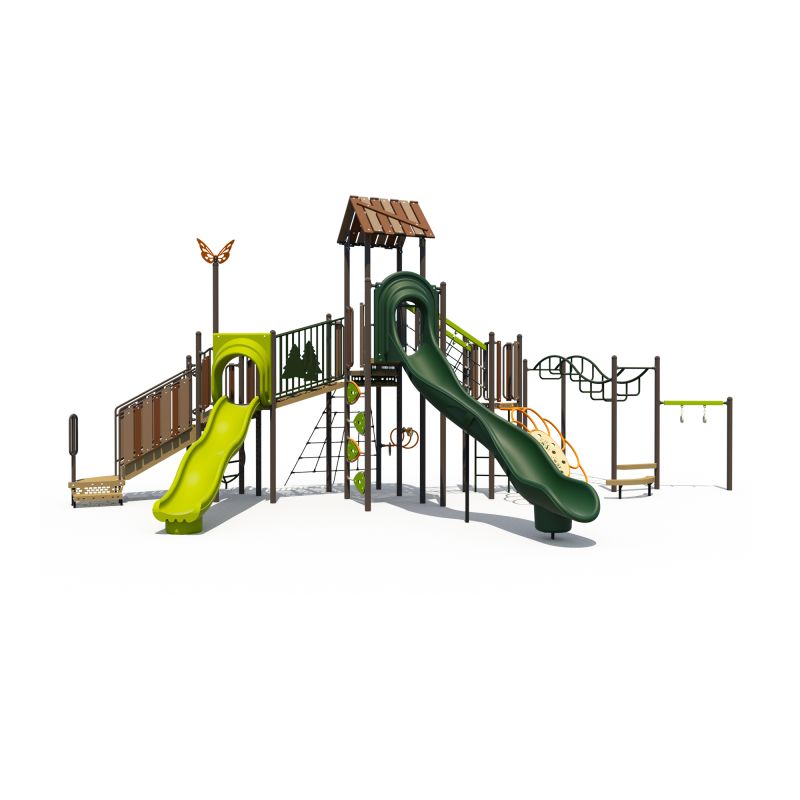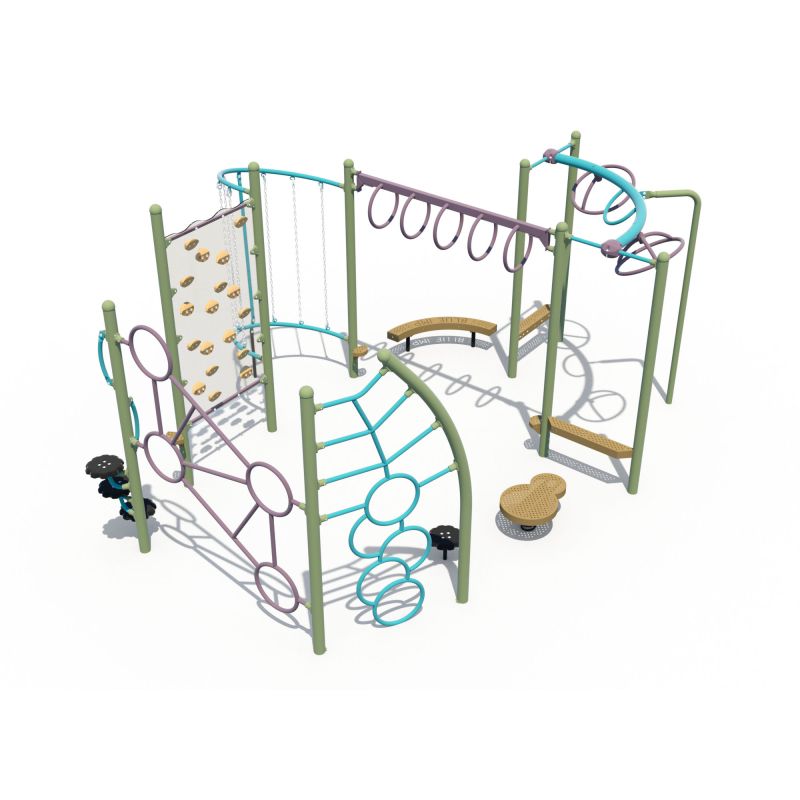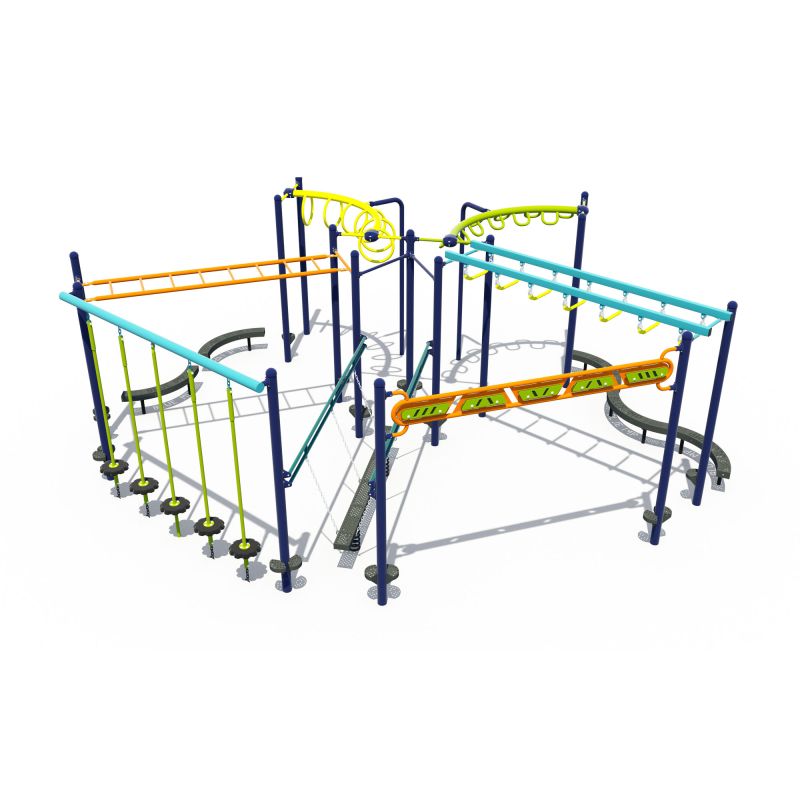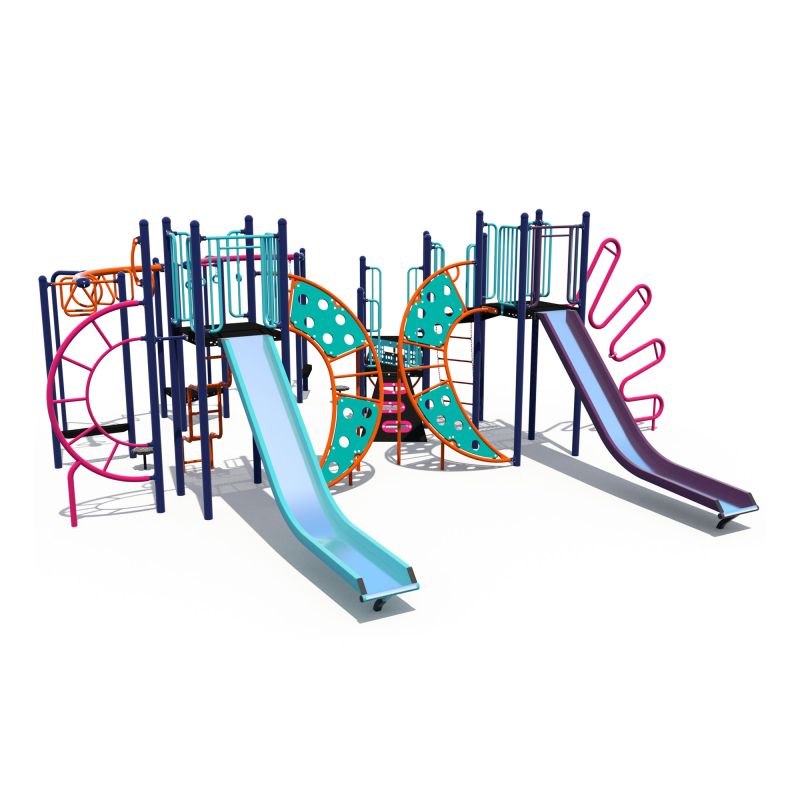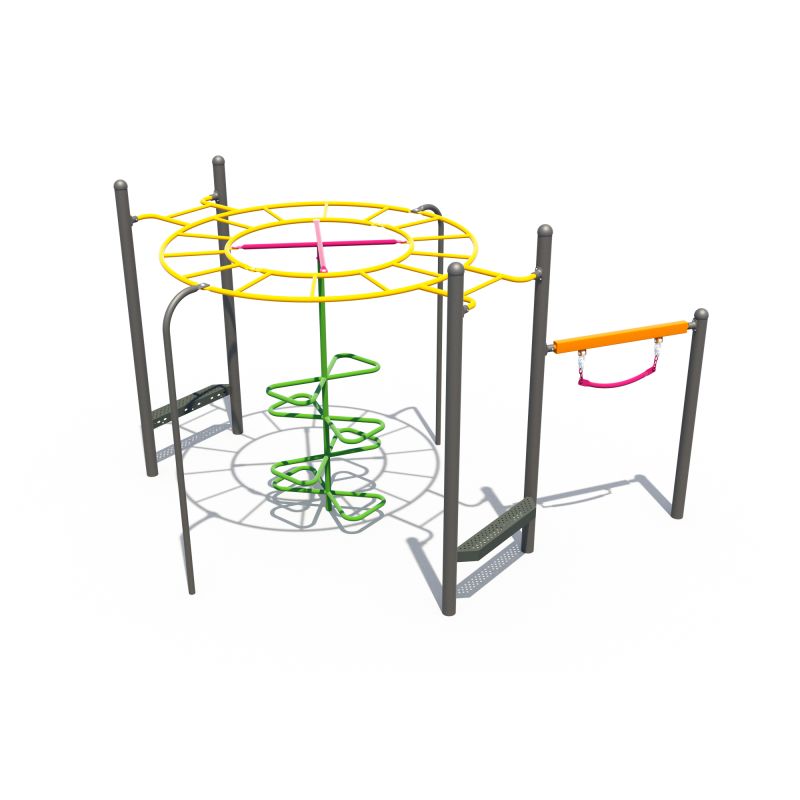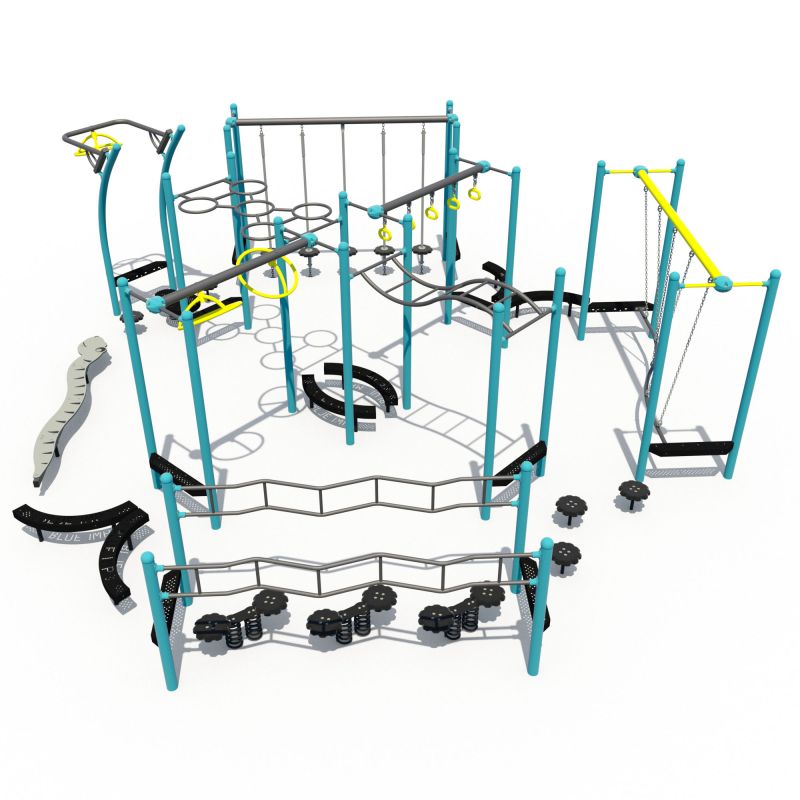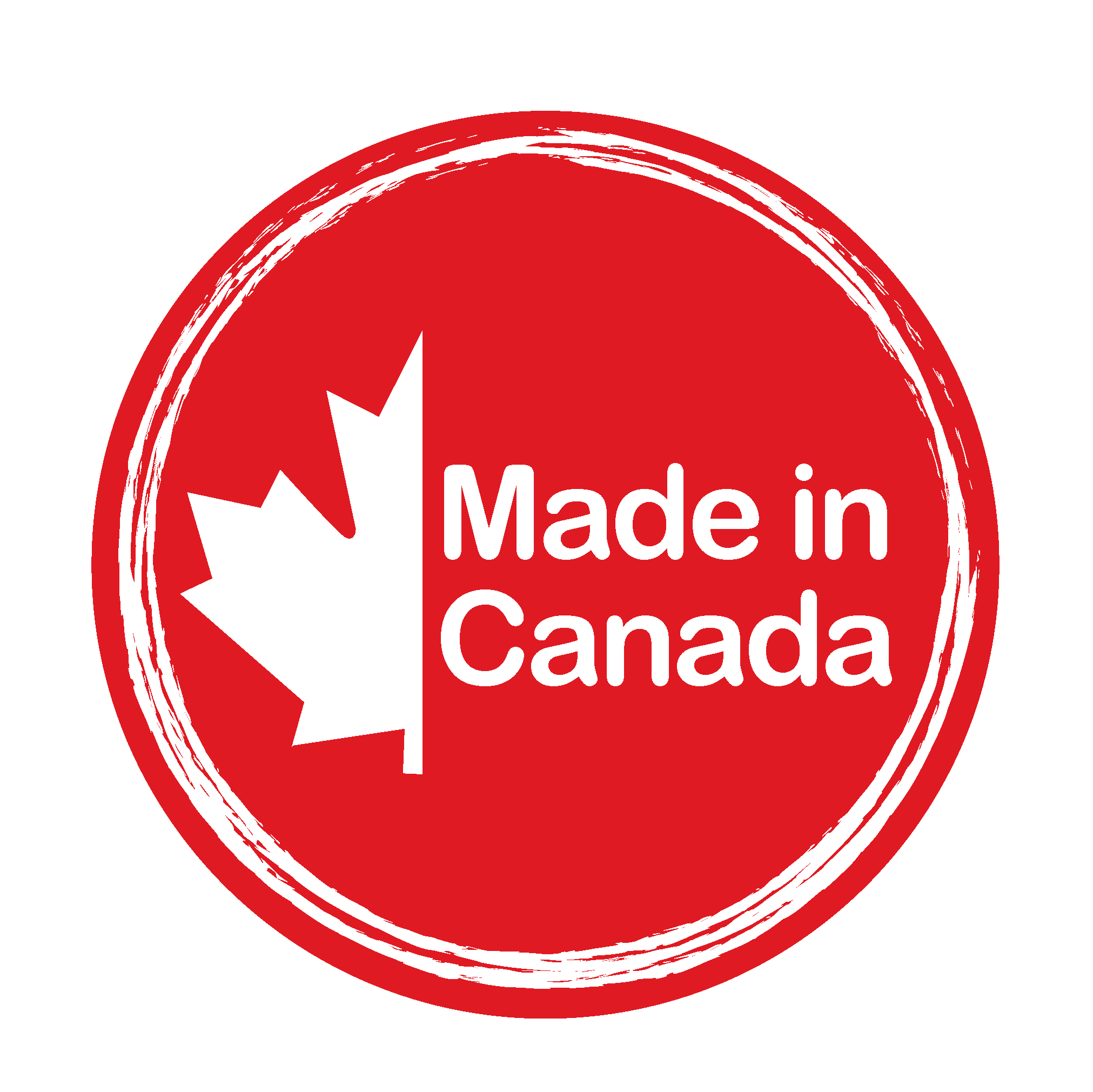- Home
- How To Fundraise For A New Playground
Bringing Your Playground Vision to Life Through Fundraising
How to Fundraise for a New Playground
Fundraising for a playground can be a daunting task, but communities across Canada have succeeded by tapping into a mix of grants, sponsorships, and grassroots support. This guide provides a comprehensive roadmap for school boards, parent-teacher committees, community organizations, and municipal groups looking to finance a playground project. We cover corporate sponsorship and matching programs, crowdfunding platforms, community event ideas, and creative student-led fundraisers.
Beyond government grant funding, the private sector is a crucial partner in playground fundraising. Canadian corporations, local businesses, and even family foundations often contribute to community projects as part of their corporate social responsibility or community investment goals. Here’s how to leverage corporate support:
- Corporate Community Grants: Many large companies in Canada have grant programs or foundations that support community infrastructure and youth projects:
- Financial Institutions: Canadian banks and insurance companies often support community wellness. For example, TD Friends of the Environment Foundation (TD FEF) offers grants (usually up to $8,000–$10,000) for projects that green community spaces, if your playground has a nature or environmental learning component (tree planting, pollinator garden, etc.), this could apply. RBC, Scotiabank, BMO, etc., have community grant programs (though often focused on education, health, or social services). A local branch manager may guide you on applying for small grants or sponsorships. Additionally, Honda Canada Foundation and other corporate foundations accept applications from registered charities for community projects.
- Telecom and Tech Companies: Telus, Bell, Rogers and others have community funds (e.g., Telus Friendly Future Foundation) which occasionally fund inclusive or technology-enhanced playground projects, especially if there’s an educational or accessibility angle.
- Financial Institutions: Canadian banks and insurance companies often support community wellness. For example, TD Friends of the Environment Foundation (TD FEF) offers grants (usually up to $8,000–$10,000) for projects that green community spaces, if your playground has a nature or environmental learning component (tree planting, pollinator garden, etc.), this could apply. RBC, Scotiabank, BMO, etc., have community grant programs (though often focused on education, health, or social services). A local branch manager may guide you on applying for small grants or sponsorships. Additionally, Honda Canada Foundation and other corporate foundations accept applications from registered charities for community projects.
- Local Business Sponsorship: Don’t underestimate local and regional businesses, they can be more approachable and often eager to give back to the community:
- Approach local companies for sponsorships and be prepared to offer recognition. This could include naming rights (e.g. a sign naming the playground or a particular structure after a major donor company), on-site advertising space (banners or donor boards), logos on event materials, or acknowledgment on social media and press releases. Emphasize the win-win: the business gains positive publicity and goodwill by supporting a family-oriented project, and the community gains funds for the playground.
- Think of businesses aligned with children and families: local real estate agents, pharmacies, grocery stores, construction firms, credit unions, and Rotary or Lions Club-run businesses often sponsor playground builds. For example, a home builder or developer might sponsor equipment if the playground is near a new housing development (good marketing for them). Big-box retailers (Walmart, Canadian Tire, Home Depot) sometimes have local store donation budgets or grant programs, talk to the store manager about your campaign.
- Service Clubs and Nonprofits: Organizations like Rotary Clubs, Lions Clubs, Kinsmen/Kinettes, Kiwanis and Legion branches regularly fundraise for community needs and often donate to playground projects. In many Canadian success stories, service clubs contributed significant amounts (often $5,000–$20,000 each). Reach out to these clubs early, they may even help run joint fundraisers or apply for matching grants on your behalf.
- Approach local companies for sponsorships and be prepared to offer recognition. This could include naming rights (e.g. a sign naming the playground or a particular structure after a major donor company), on-site advertising space (banners or donor boards), logos on event materials, or acknowledgment on social media and press releases. Emphasize the win-win: the business gains positive publicity and goodwill by supporting a family-oriented project, and the community gains funds for the playground.
- Donation-Matching Programs: Many companies offer matching gift programs, if an employee (or retiree) donates, the company matches that donation (often dollar-for-dollar up to a limit). Encourage parents and community members to check if their employers have a matching gift policy, as this can instantly double those contributions. For example, banks and large corporations commonly match employee donations to registered charities; if your playground committee is working with a charitable school or foundation, those donations could be eligible.
- Also, companies sometimes match funds raised at an event where their employees volunteer. If a team from a local business helps with your fundraiser, the company might donate an equal amount to what was raised. This not only boosts funds but also involves local businesses in a hands-on way.
- Philanthropic Foundations: Some private family foundations will match community fundraising efforts to spur local involvement. Keep an eye out for regional foundations or charitable trusts (often run by local philanthropists or organizations) that might support your cause, especially if you can demonstrate community buy-in.
- Also, companies sometimes match funds raised at an event where their employees volunteer. If a team from a local business helps with your fundraiser, the company might donate an equal amount to what was raised. This not only boosts funds but also involves local businesses in a hands-on way.
- In-Kind Corporate Support: Not all contributions are cash – materials or services can defray costs. A paving company might donate or discount the cost of site prep or asphalt, a landscaping firm could provide soil and sod, a trucking company might transport equipment for free, or a local print shop could sponsor your campaign’s brochure printing. These in-kind gifts reduce the budget you need to fundraise. Always publicly thank and promote sponsors who give in-kind; their contributions are valuable and can encourage others to chip in.
Strategy for success: When seeking corporate sponsors, create a sponsorship proposal outlining the project, the community impact, how much money you seek, and what recognition or benefit the sponsor will receive. Include any media coverage or endorsements you have, businesses like to see that their contribution will be noticed. Offer tiers of sponsorship (e.g. Bronze, Silver, Gold levels) with increasing perks; for example, “Gold” sponsors donating $5,000+ get their logo on a prominent sign, “Silver” ($1,000+) listed on a plaque, etc.. Always follow up with a thank-you letter and an update on the project progress to keep your sponsors engaged.
Acknowledge the Playground’s Sponsors & Donors
Acknowledging donors or sponsors of a playground project is an important way to show appreciation and recognize their contribution to the project. Signs or custom displays within the playground or other forms of recognition not only express gratitude but also help build lasting relationships and encourage future support. From including sponsor logos on park benches and/or specific pieces of playground equipment to dedicated signage, Blue Imp offers many ways to publicly recognize sponsors and donors. Our Playground Sponsors Thank You Sign is just one way to thank those who have contributed to the making the project a success, so be sure to ask your Blue Imp sales rep for more suggestions.
Online crowdfunding is a powerful tool to rally support beyond your immediate community. It allows you to share your story widely and collect donations from friends, family, alumni, and even strangers who believe in your cause. For a playground project, a crowdfunding campaign can complement traditional fundraising:
- GoFundMe: One of the most popular crowdfunding platforms for personal and community causes. It’s user-friendly and widely known in Canada. You can set up a campaign page describing your playground project, funding goal, and timeline, and share the link via social media and email. There are no upfront fees to start; GoFundMe deducts a small percentage of each donation. Pros: Huge audience reach, easy sharing, people can donate and get updates. Cons: Donations are not automatically tax-receiptable (important if donors expect charitable receipts, you would need a registered charity intermediary to issue receipts). Despite that, many school and community groups successfully use GoFundMe for playgrounds, often raising a few thousand to tens of thousands of dollars.
- FundRazr: A Canadian crowdfunding platform (based in Vancouver) geared towards nonprofits and community projects. FundRazr allows integration with PayPal and has options for charitable campaigns (they even partner with charitable organizations so that donors can get receipts when applicable). It’s worth considering if you prefer a Canadian company or need specific features for team-based fundraising.
- CanadaHelps & Charitable Crowdfunding: If you have a registered charity involved (for example, your school’s charitable foundation or a partner nonprofit), CanadaHelps offers online fundraising pages and a peer-to-peer campaign option. This means you could set up a playground fundraising page through CanadaHelps, and donors will receive instant tax receipts. CanadaHelps charges a small fee (a few percent) but it’s built for Canadian charities and is trusted.
- Social Media Fundraising: Outside of dedicated crowdfunding sites, leverage social media tools. Facebook has a fundraising feature for registered charities, if your school’s parent association is a charity or you partner with one, a Facebook fundraiser can reach people in your network. Even without that, regularly sharing updates, photos, and short videos of children (or community members) talking about why the playground is needed can drive people to your crowdfunding page. Platforms like Instagram and Twitter (now X) can spread the word too; engage local influencers or media to repost your campaign.
Keys to a successful crowdfunding campaign:
- Tell a compelling story – explain why the playground matters (e.g. safety issues with old equipment, lack of play space in the area, an inclusive playground for children with disabilities, etc.). Use photos or a video to make it personal.
- Set a realistic goal and deadline. People are motivated to give when they see a clear goal and a sense of urgency. Break your goal into phases if needed (e.g. “Phase 1: Raise $50,000 by year-end to purchase the main play structure”).
- Offer recognition or rewards: While not necessary, you can encourage donations by offering something in return. This might be symbolic (e.g., “donate $100 and your name will be engraved on a donor plaque at the playground” or “$250 and your family name goes on a picket on our fence”) or a small gift (school swag, thank-you card from students, etc.). For crowdfunding sites like Kickstarter, reward tiers are expected; on GoFundMe, it’s optional but a nice touch to thank donors publicly unless they choose to be anonymous.
Promote relentlessly: Simply creating a page isn’t enough – share it widely. Send the link to local news outlets (they might feature your story, which often brings a surge of donations). Post frequent updates on progress (each time you hit a milestone, or when a matching challenge arises). Encourage supporters to share with their networks. Keep the momentum going by highlighting how close you are to the goal or by featuring different voices (e.g., a quote from a student or parent). Crowdfunding is most effective in the first and last weeks of a campaign – use that middle period to do mini-events or announcements to avoid a slump.
Traditional fundraising events remain a backbone of school and community campaigns. They not only bring in money but also raise awareness and strengthen community spirit around the project. Below are event ideas and best practices to maximize their success:
- Classic Fundraising Events: Tried-and-true activities can still draw crowds and donations:
- Bake Sales and BBQs: Organize bake sales at school concerts or a community BBQ at a local park. Encourage families to contribute baked goods or food items (keeping costs low) and set up donation jars at the event.
- Car Washes: Students and volunteers can hold a weekend car wash in a school or mall parking lot. These typically yield modest funds, but when combined with other efforts, every bit helps (and they engage students directly).
- Raffle or 50/50 Draw: Solicit prize donations from local businesses (gift baskets, gift cards) and sell raffle tickets. Ensure you follow local raffle licensing rules. A 50/50 draw (where half the ticket sales go to the winner, half to the project) can be done at community events or sports games.
- Bottle Drive: Collect refundable drink containers from community members – either designate a drop-off day or have teams go door-to-door (with permission and notice). In provinces with deposit refunds, bottle drives can surprisingly add up to hundreds or a few thousand dollars in a day, especially if you mobilize many helpers.
- Bake Sales and BBQs: Organize bake sales at school concerts or a community BBQ at a local park. Encourage families to contribute baked goods or food items (keeping costs low) and set up donation jars at the event.
- Engaging Community Events: Larger events can raise significant funds and build buzz:
- Community Carnival or Fun Fair: Host a family fun day with games, face painting, bouncy castles, and food booths. Charge a ticket fee or sell tickets for activities. Schools often do this at year-end, you can tie it specifically to the playground (e.g., “Playground Palooza Fun Fair”) and include displays of the new playground design to get everyone excited.
- Silent Auctions & Trivia Nights: Approach local businesses for item donations (everything from restaurant certificates to hockey tickets). Then hold an auction event or an online auction. Trivia or bingo nights at a community hall (with an entrance fee) can also bring in adults for a night out in support of the playground. Combine with a silent auction or raffle at the event to maximize revenue.
- Fun Run/Walkathon: Organize a 5K “Run for the Playground” or a walkathon where participants collect pledges. This doubles as a wellness activity. Ensure it’s family-friendly so kids can take part (consider a short route or a “kids dash” as well). You can have participants wear something playful (superhero capes, silly hats) to draw attention. These events not only raise money but also are great for media coverage, showing community members literally going the extra mile.
- Benefit Concert or Talent Show: Showcase local talent, school bands, community theatre, or even teacher acts, in a ticketed show. Performing arts events can unite the community and all ticket proceeds go to the playground. If you have a popular local musician or an alumni willing to perform, that can boost ticket sales. Combine with a bake sale or merchandise table at the event.
- Themed Dinners or Cultural Nights: Host a community potluck dinner or a multicultural food festival where families bring dishes from different cultures. Charge an entry or per-plate fee. These events celebrate the community’s diversity and bring people together socially while contributing funds.
- Community Carnival or Fun Fair: Host a family fun day with games, face painting, bouncy castles, and food booths. Charge a ticket fee or sell tickets for activities. Schools often do this at year-end, you can tie it specifically to the playground (e.g., “Playground Palooza Fun Fair”) and include displays of the new playground design to get everyone excited.
- Best Practices for Events:
- Plan and publicize early: Good events take planning. Set a date well in advance and advertise through school newsletters, community Facebook groups, posters around town, and local media event listings. If people know a big fundraiser is coming, they will save the date (and possibly budget to donate).
- Set a clear goal for each event: Announce “Our goal is to raise $5,000 at this carnival” and maybe even show a thermometer chart at the event. Clear targets motivate attendees to help achieve them, whether by buying a few more tickets or throwing in extra at donation bins.
- Mobilize volunteers: You’ll need many hands, recruit parents, teachers, high school students (for volunteer hours), and community members. Create sub-committees for each event (e.g. ticket sales, food, games, clean-up) so tasks are divided. Successful campaigns often reflect solid organization and teamwork. Having a dedicated team for fundraising ensures no single person burns out.
- Keep costs low: Solicit donations or discounts for supplies (food, prizes, venue if not at the school). The more you can get sponsored in the event, the higher your net profit. For example, if a local band will play for free or a company covers the food costs, your event revenue goes straight to the cause.
- Make it family-friendly: Since a playground is for kids, involve them and make events that families want to attend. If parents know their children will have fun at the fundraiser, they’re more likely to come and spend. Consider adding inexpensive draws like a cupcake decorating station, a craft corner, or inviting fire/police vehicles for kids to explore at an outdoor event.
- Tell the playground story at each event: Use these gatherings to remind everyone why you’re doing this. Have a poster or slideshow of the playground design or a message from students (“Why We Want a New Playground”). A short speech or a student performance about the project can tug heartstrings and loosen purse strings. People give more when they feel the impact.
- Thank and acknowledge publicly: During and after the event, thank volunteers, sponsors, and attendees. Share the results (“The bake sale raised $1,200!”) on social media and in school communications. This celebrates the community’s contribution and sets the stage for the next event (people see the progress and want to help again).
- Plan and publicize early: Good events take planning. Set a date well in advance and advertise through school newsletters, community Facebook groups, posters around town, and local media event listings. If people know a big fundraiser is coming, they will save the date (and possibly budget to donate).
- Combine Events with Matching Challenges: If possible, leverage a matching offer during an event. For instance, a local business might agree to match funds raised at the fun fair up to $2,000. Announce that loudly, “Every dollar you spend today will be doubled by [Business X]!”, this can significantly boost sales and enthusiasm.
Finally, stay organized and keep records. Track expenses and revenues for each event and overall. This will help you identify the most cost-effective efforts and also is information you can use in grant applications (demonstrating community fundraising success). Plus, detailed records ensure you can properly thank donors and perhaps leave a playbook for future committees.
One of the best aspects of a playground fundraiser is that it directly involves the children who will benefit. Engaging students and their families not only raises money but also builds a sense of ownership and pride in the project. Here are some creative, kid-friendly fundraising methods:
- Student-Run Challenges and “Athons”: T urn fundraising into a participatory challenge for kids:
- Read-a-thon / Math-a-thon: Students collect pledges for reading books or completing math problems. For example, family and neighbors might pledge $2 per book a child reads in a month. The students improve their skills, and the pledges go to the playground. This works well if tied into a school literacy week or math challenge. Ask your Blue Imp rep about customizable support materials to help make your ”A-Thon” a success.
- Walk-a-thon / Dance-a-thon: Similar to the fun run concept but done in a school setting. For a walk-a-thon, classes or the whole school walks a set route (or simply around the school field) and they gather per-lap or flat donations. A dance-a-thon can be held in the gym, kids get sponsors to dance for a certain number of minutes. These events are fun for students and can raise substantial funds with broad participation. Ask your Blue Imp rep about customizable support materials to help make your ”A-Thon” a success.
- “Change for Change” (Coin Drive): Each class or grade competes to collect the most spare change over a period (pennies, nickels, dimes, or “Fill the Bucket” contests). Kids love competition, and those coins add up. One twist is the Penny Wars game: classes have jars to fill; adding pennies to your class jar gives positive points, adding silver coins or bills to others’ jars deducts points, it becomes a friendly sabotage competition and boosts total donations. At the end, all money still goes to the playground, and the winning class gets a prize (like extra recess or a pizza party).
- Recycling Drives: Encourage families to bring in old electronics for recycling (some programs pay for collected items) or have an ongoing bottle drive where kids bring bottles to school each week. It teaches kids about recycling while raising money.
- Read-a-thon / Math-a-thon: Students collect pledges for reading books or completing math problems. For example, family and neighbors might pledge $2 per book a child reads in a month. The students improve their skills, and the pledges go to the playground. This works well if tied into a school literacy week or math challenge. Ask your Blue Imp rep about customizable support materials to help make your ”A-Thon” a success.
- Family Contribution Programs: Involve the whole family and community in creative giving:
- “Buy-a-Brick” or “Sponsor-a-Seat”: Offer families and community members an opportunity to sponsor a tangible piece of the playground. For example, sell engraved bricks or paving stones that will be installed at the playground entrance, or plaques on benches/picnic tables. A typical rate might be $100 or $250 per brick with the donor’s name or a message. This not only raises money but leaves a lasting personal mark for donors in the playground. Specific pieces of playground equipment can be customized with the names or logos of donors. Ask your Blue Imp for more information about this.
- Artwork Auctions: Tap into student creativity. Have an art teacher or volunteer help students create artwork (paintings, clay tiles, decorated planters, etc.) related to play or community. Then auction these art pieces to parents and relatives at a school art show event. Proud family members get one-of-a-kind keepsakes, and the playground fund grows. Similarly, students could make holiday ornaments or greeting cards to sell.
- Recipe Book or Calendar: Collect favorite recipes from school families or artwork/poems from students and compile them into a cookbook or calendar. Sell these as a community cookbook (“Playground Pleasures Cookbook”) or a calendar featuring student drawings of playground fun. This engages many contributors and gives supporters something valuable for their purchase.
- Skills or Chore Auctions: Older students or families can volunteer their skills, which others bid on. For example, a high school student might offer 5 hours of yard work or babysitting; a parent might offer a homemade cake, a photography session, or a music lesson. Hold an auction of these donated services/talents, it’s a way to raise money while sharing skills within the community.
- “Buy-a-Brick” or “Sponsor-a-Seat”: Offer families and community members an opportunity to sponsor a tangible piece of the playground. For example, sell engraved bricks or paving stones that will be installed at the playground entrance, or plaques on benches/picnic tables. A typical rate might be $100 or $250 per brick with the donor’s name or a message. This not only raises money but leaves a lasting personal mark for donors in the playground. Specific pieces of playground equipment can be customized with the names or logos of donors. Ask your Blue Imp for more information about this.
Fundraising for a new playground is a significant undertaking, but by leveraging a mix of corporate contributions, and community-led initiatives, it can absolutely be achieved. The process will involve research, planning, and plenty of community engagement. Remember to celebrate small wins along the way – every grant approved or event held is bringing your goal closer. Keep your community informed and involved, from children collecting coins to parents writing grant applications or companies sponsoring equipment. A playground build is truly a community build. By following the strategies and examples in this guide, your team can create not just a fun place for children to play, but also a lasting testament to community collaboration.
Good luck with your playground project!
